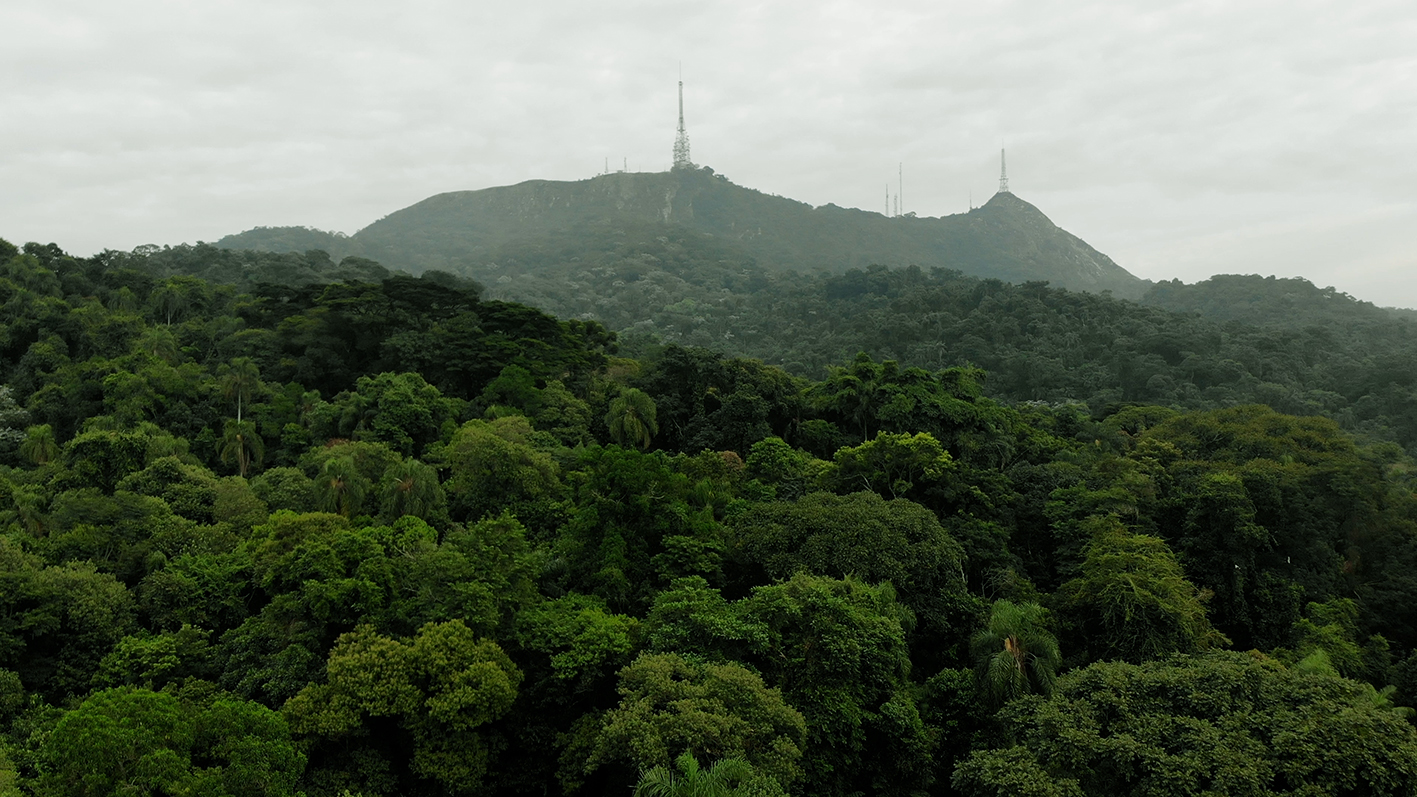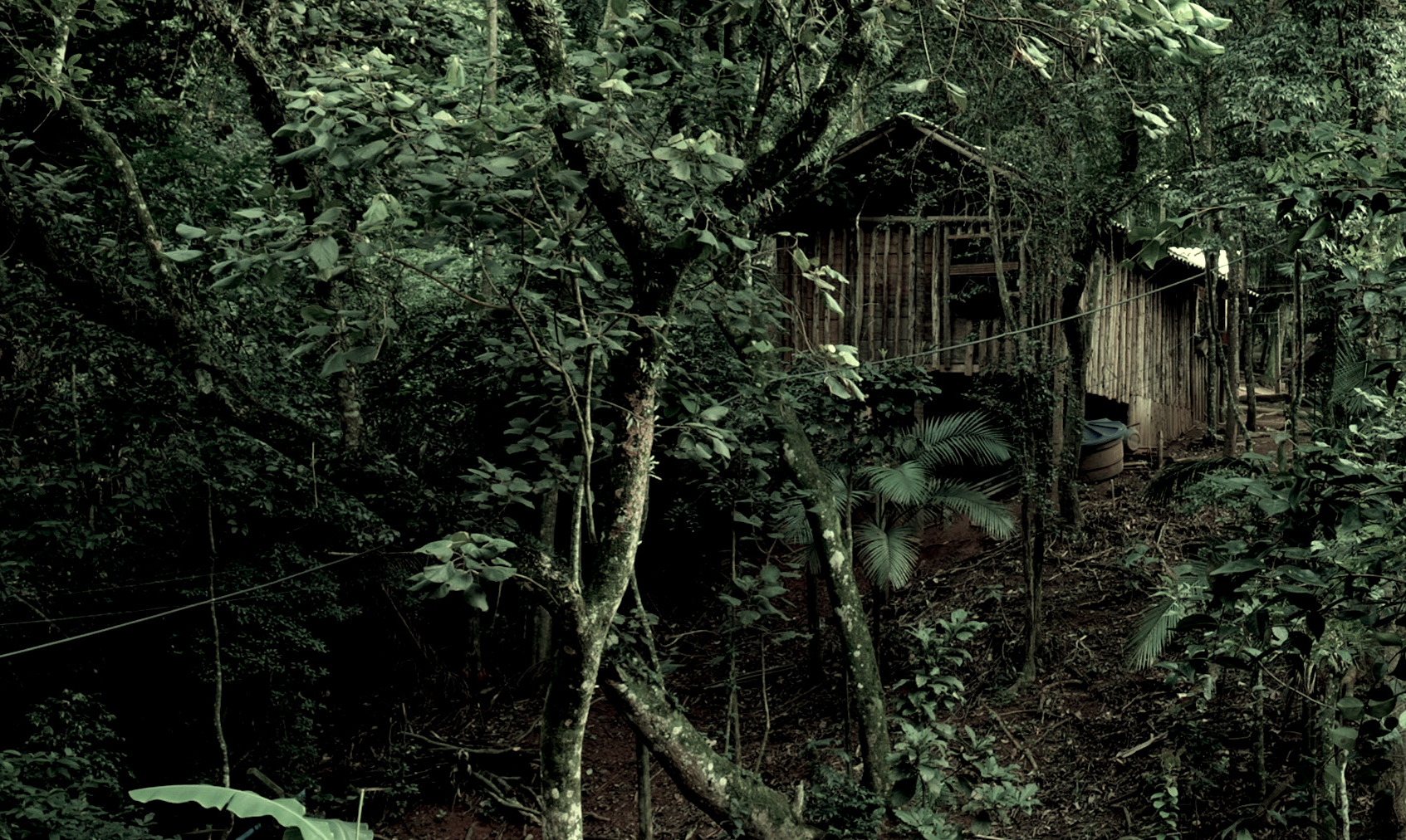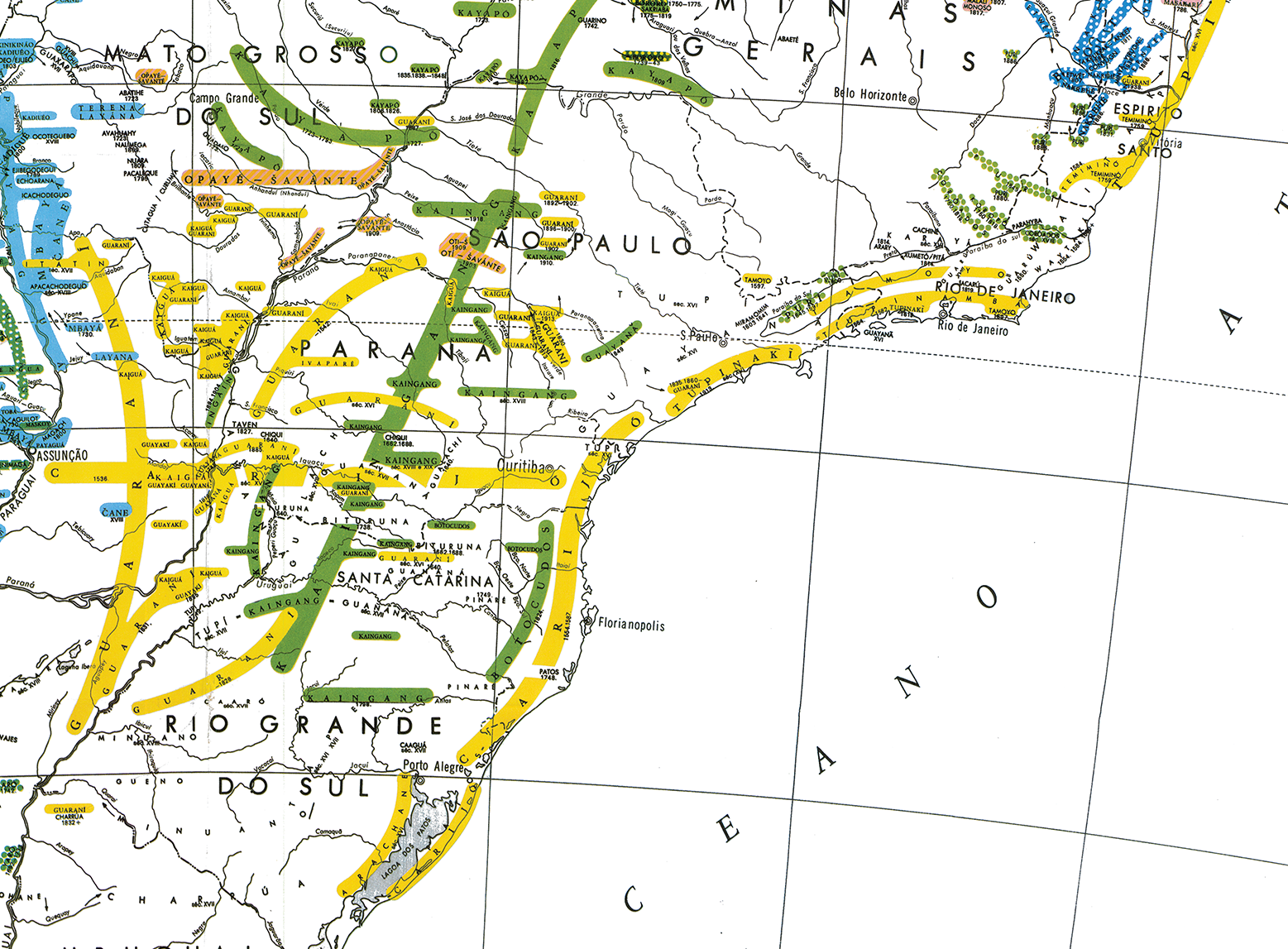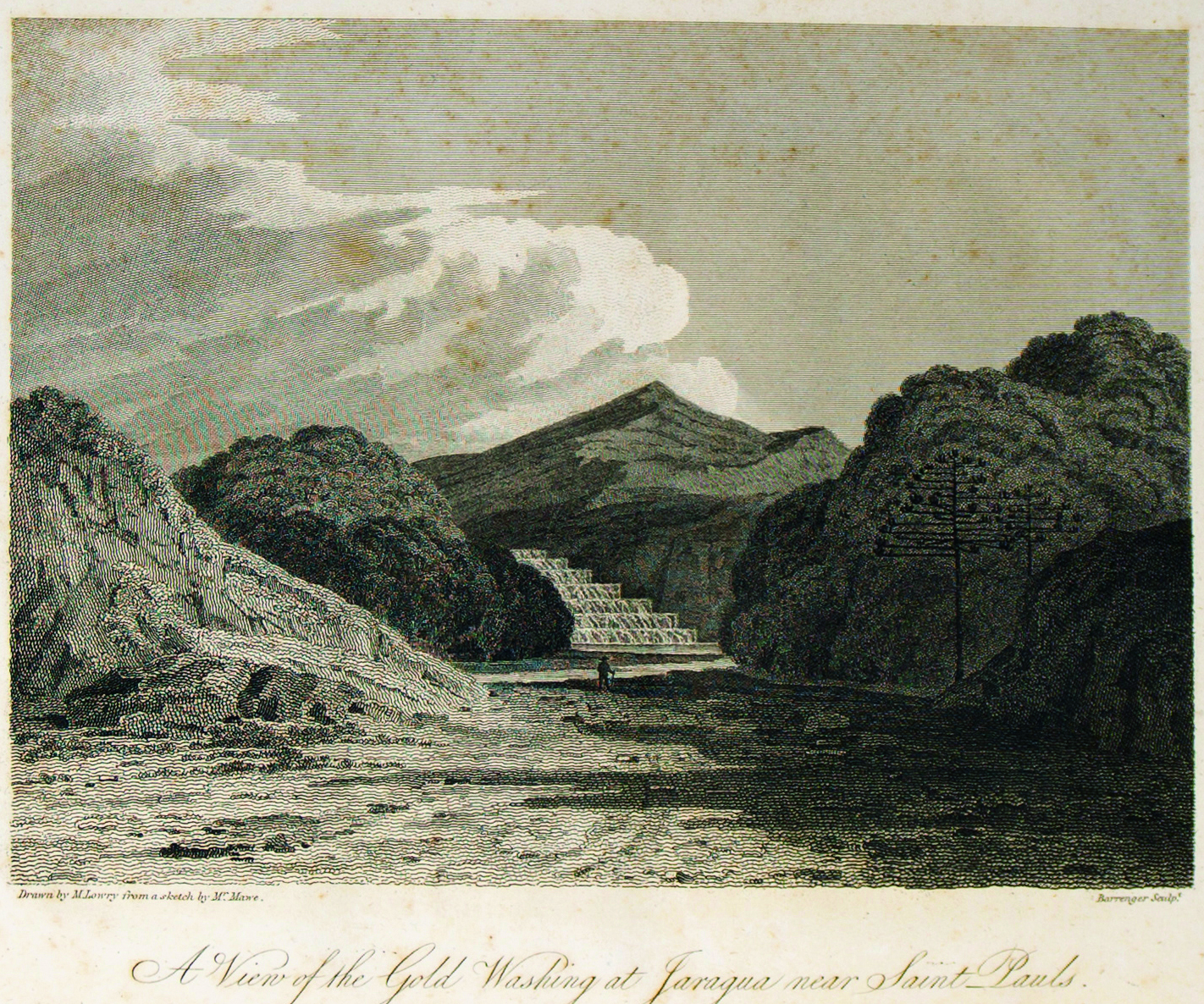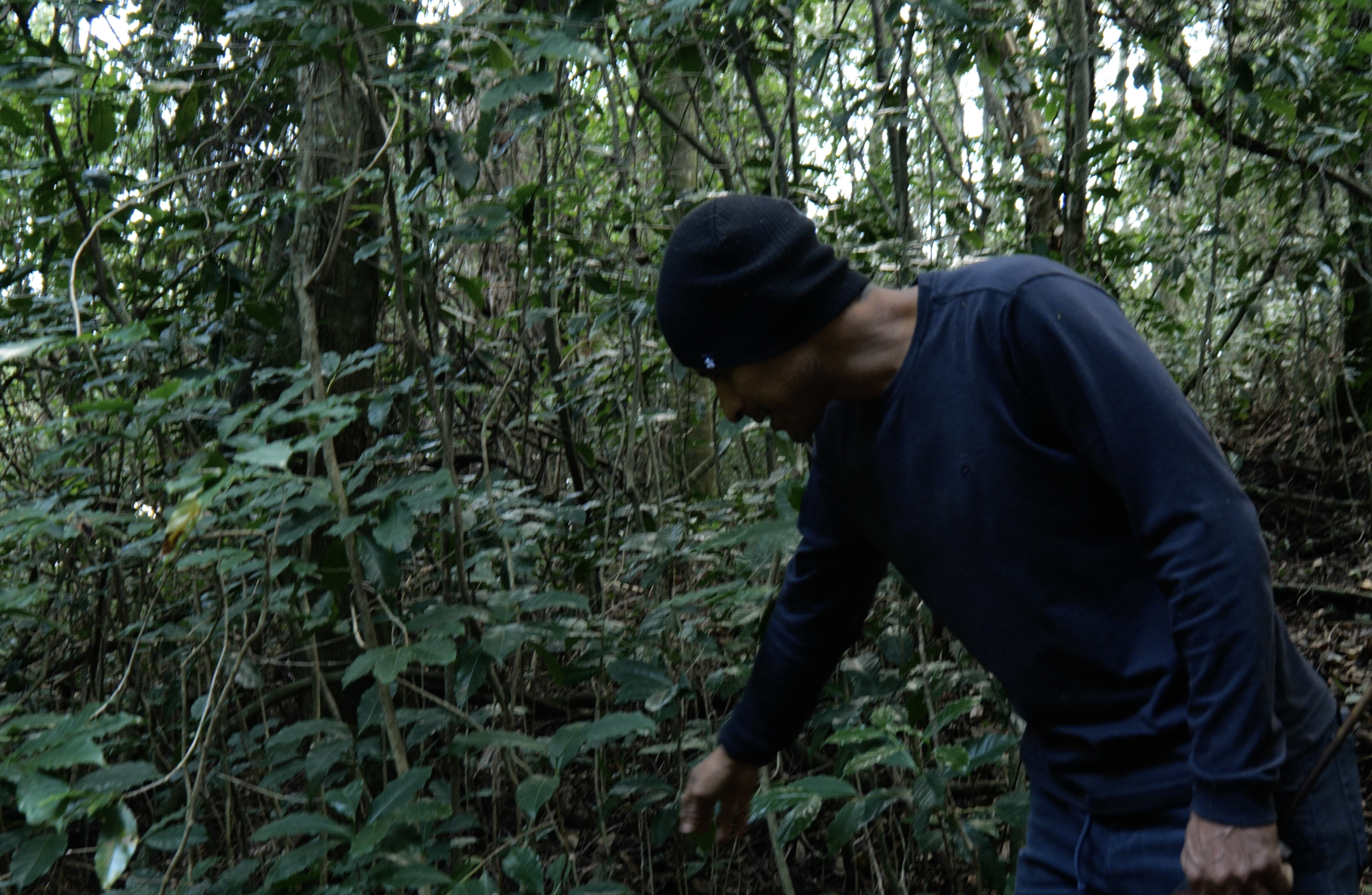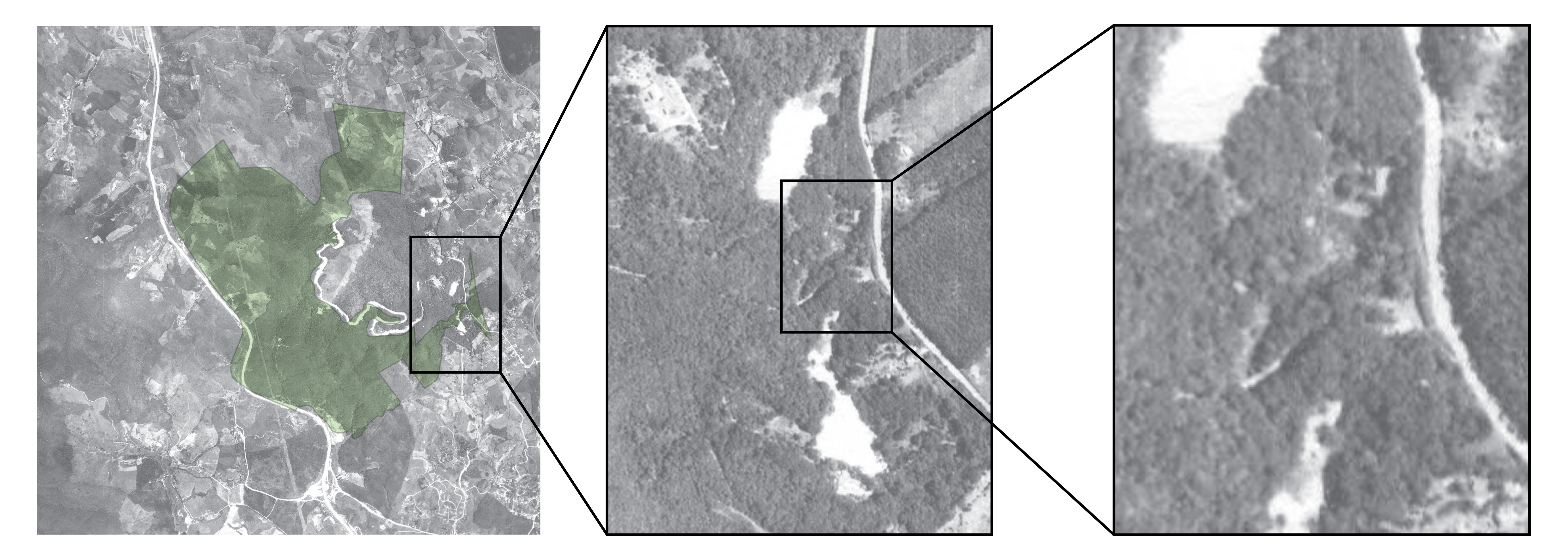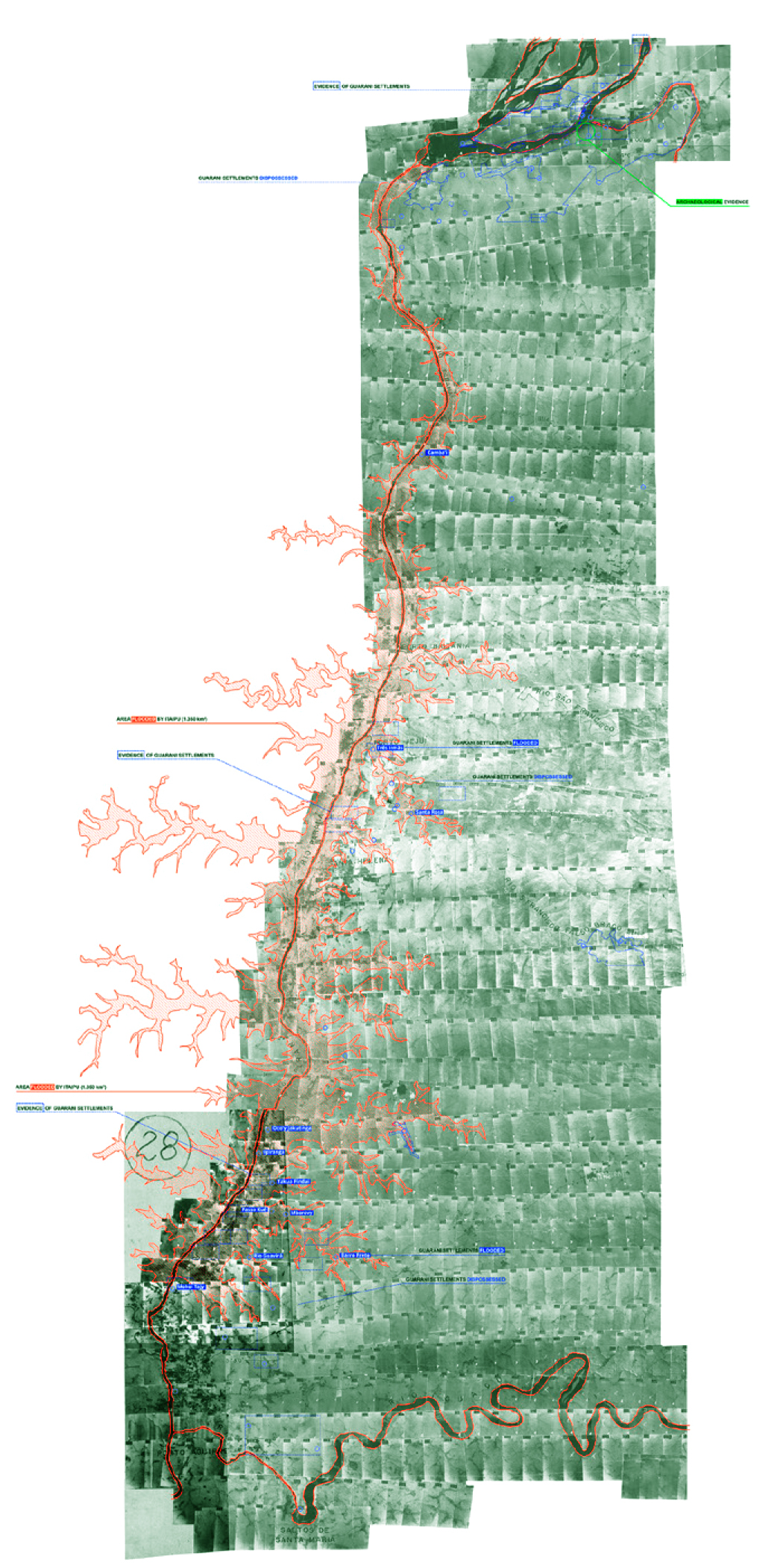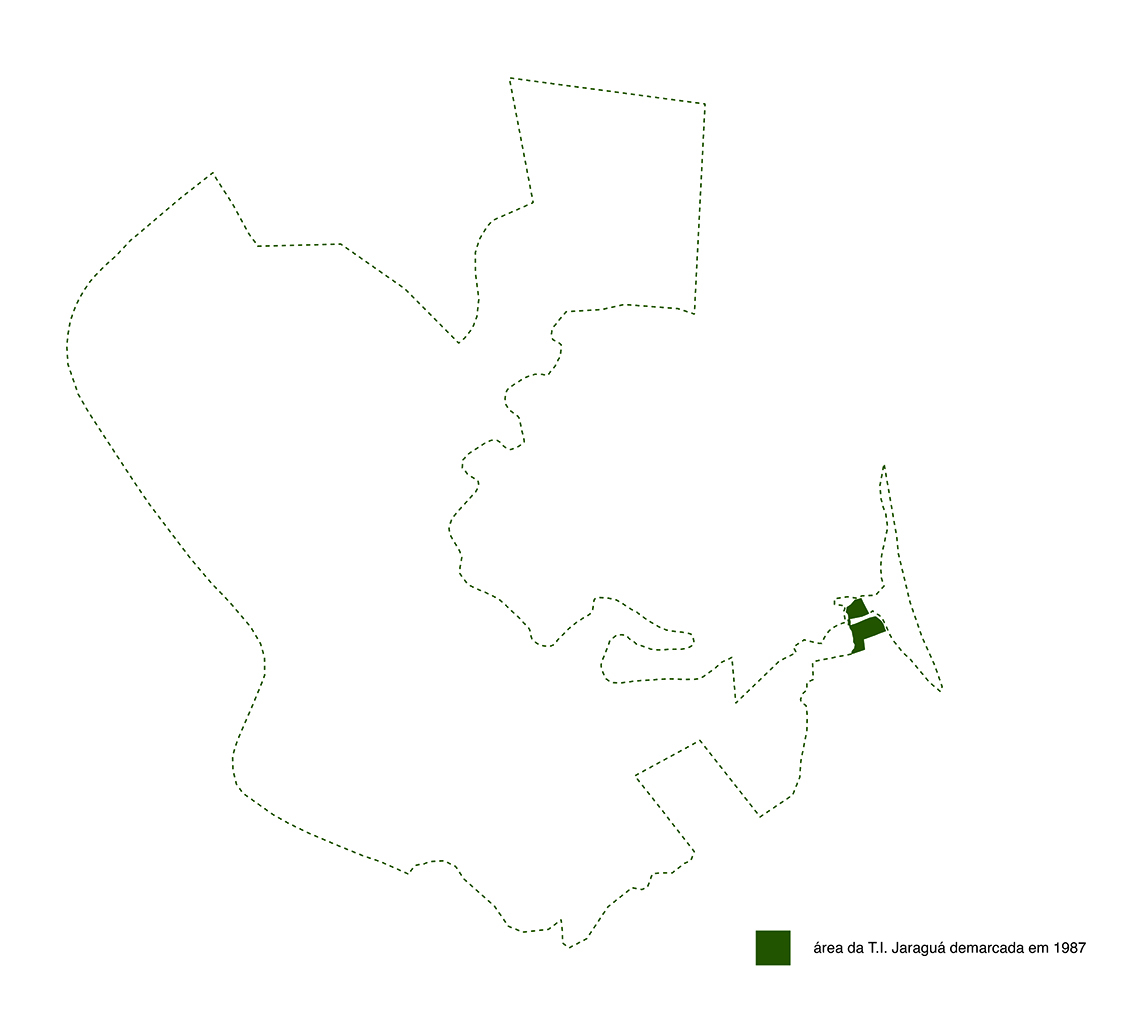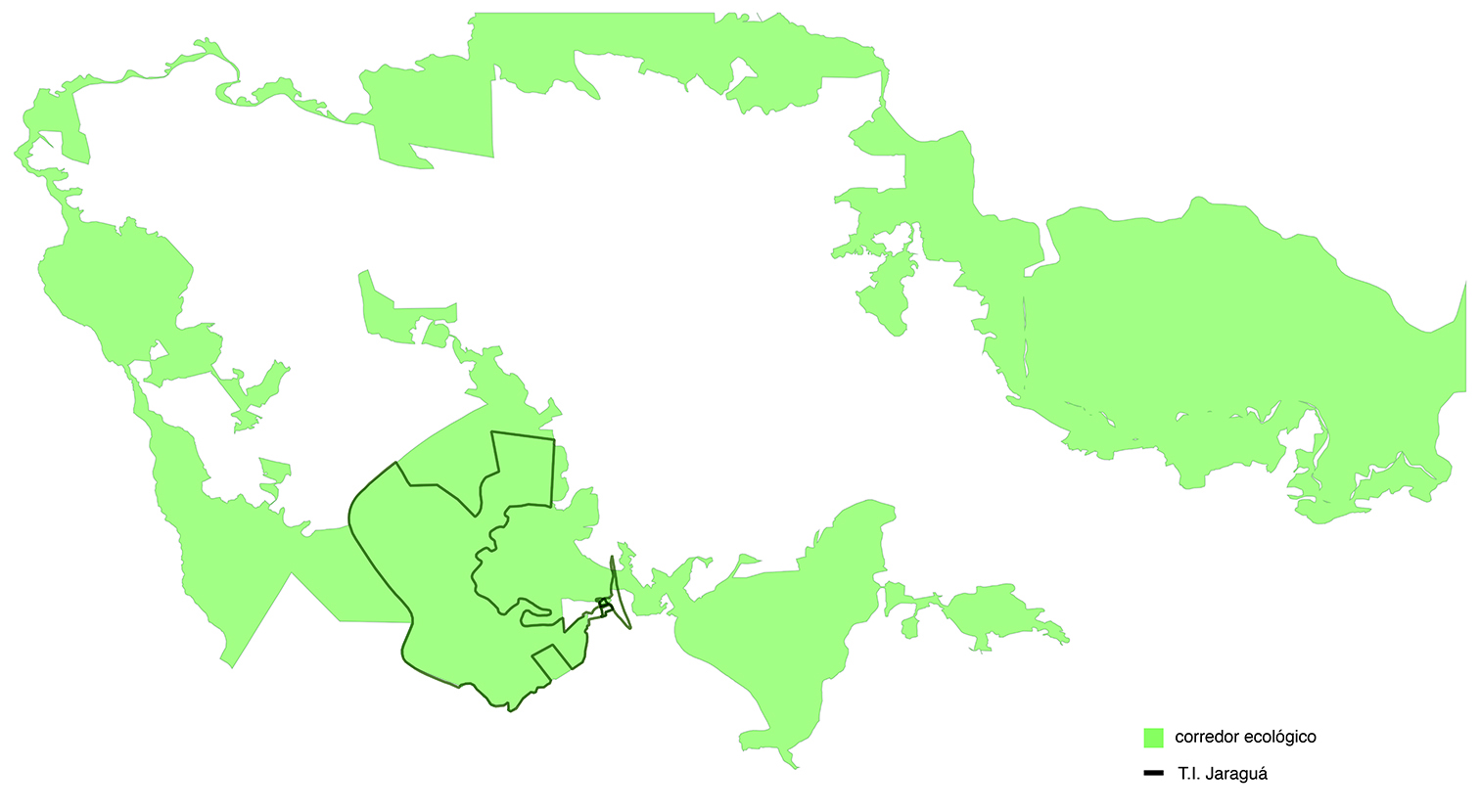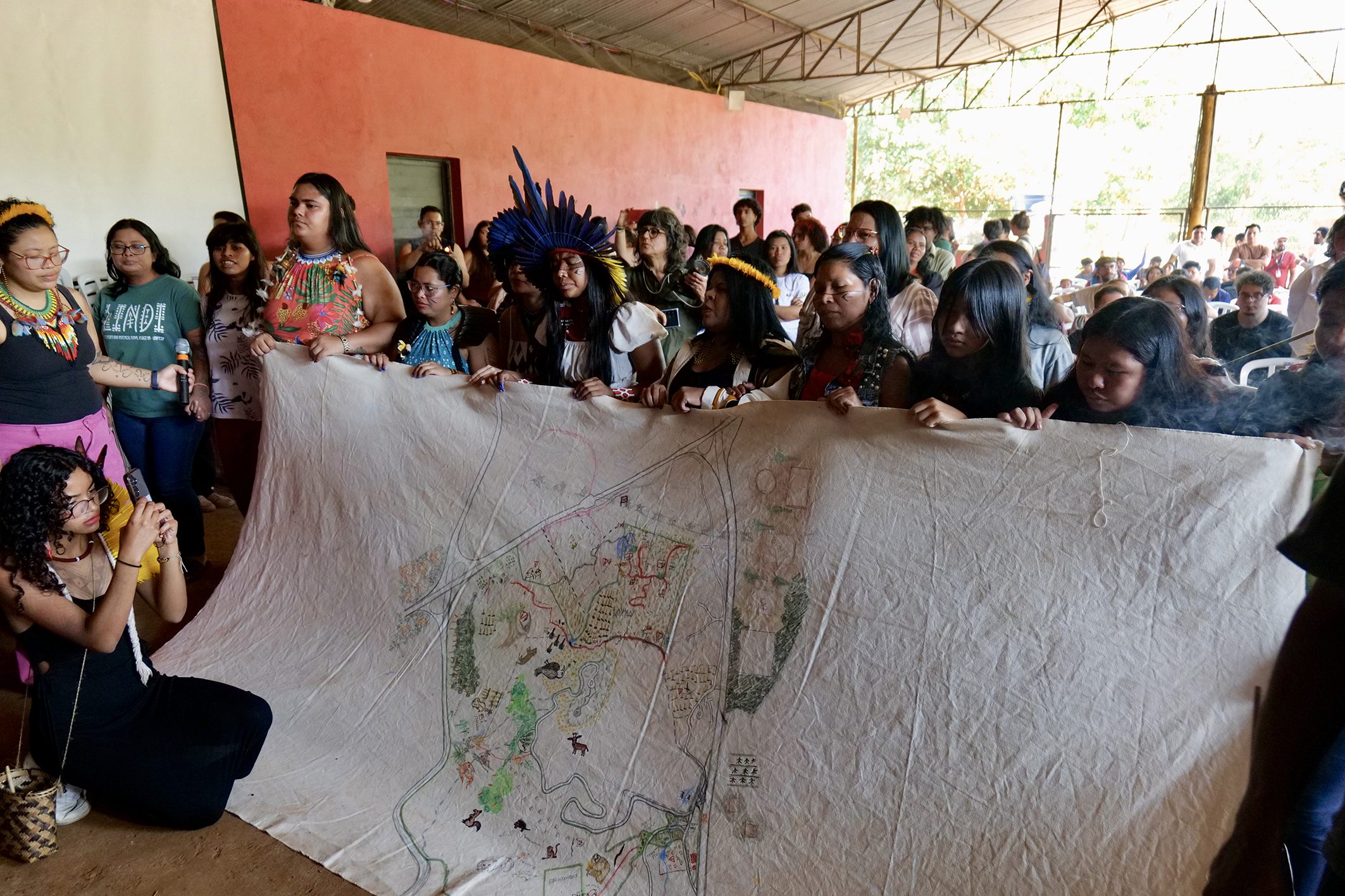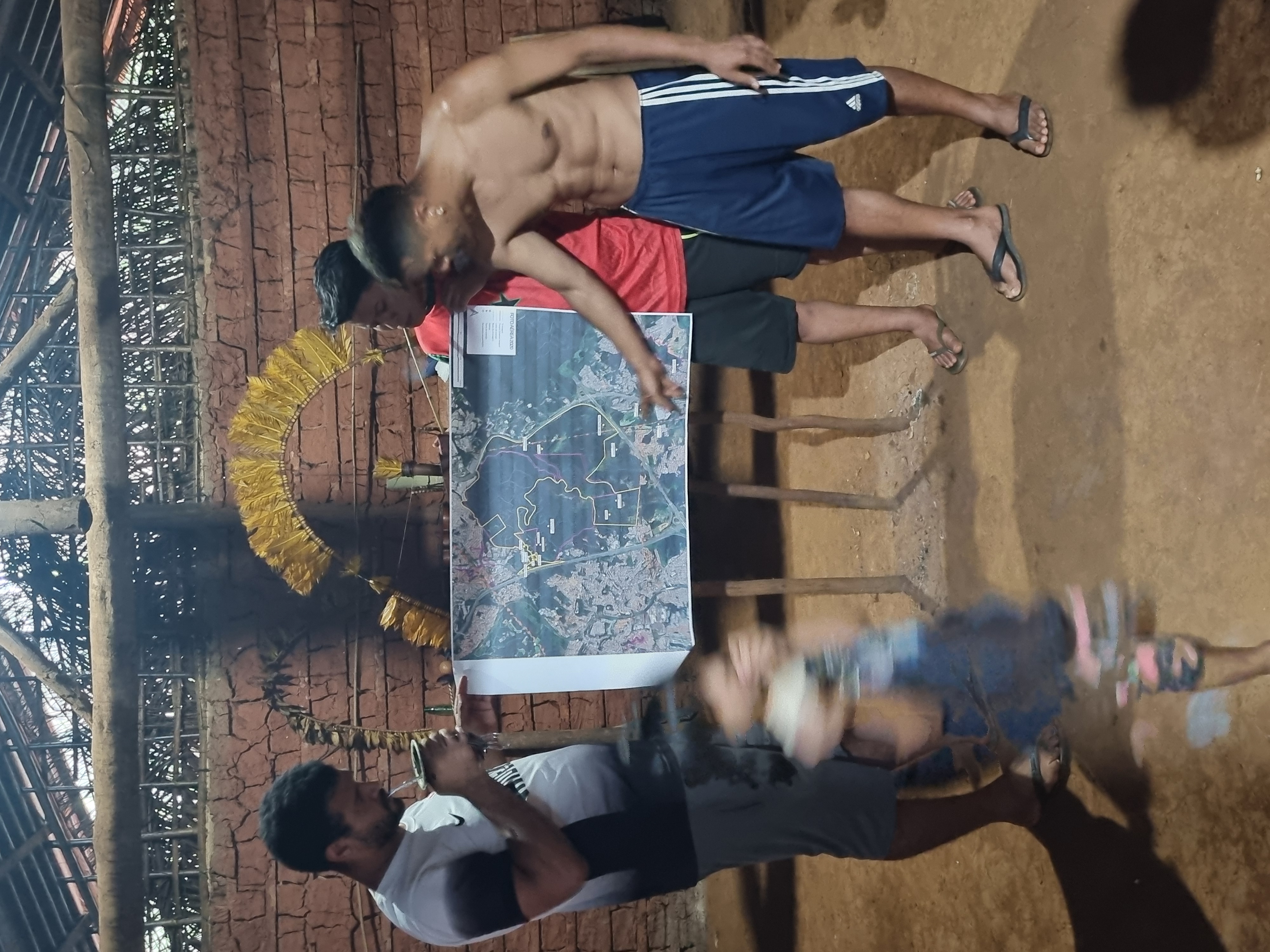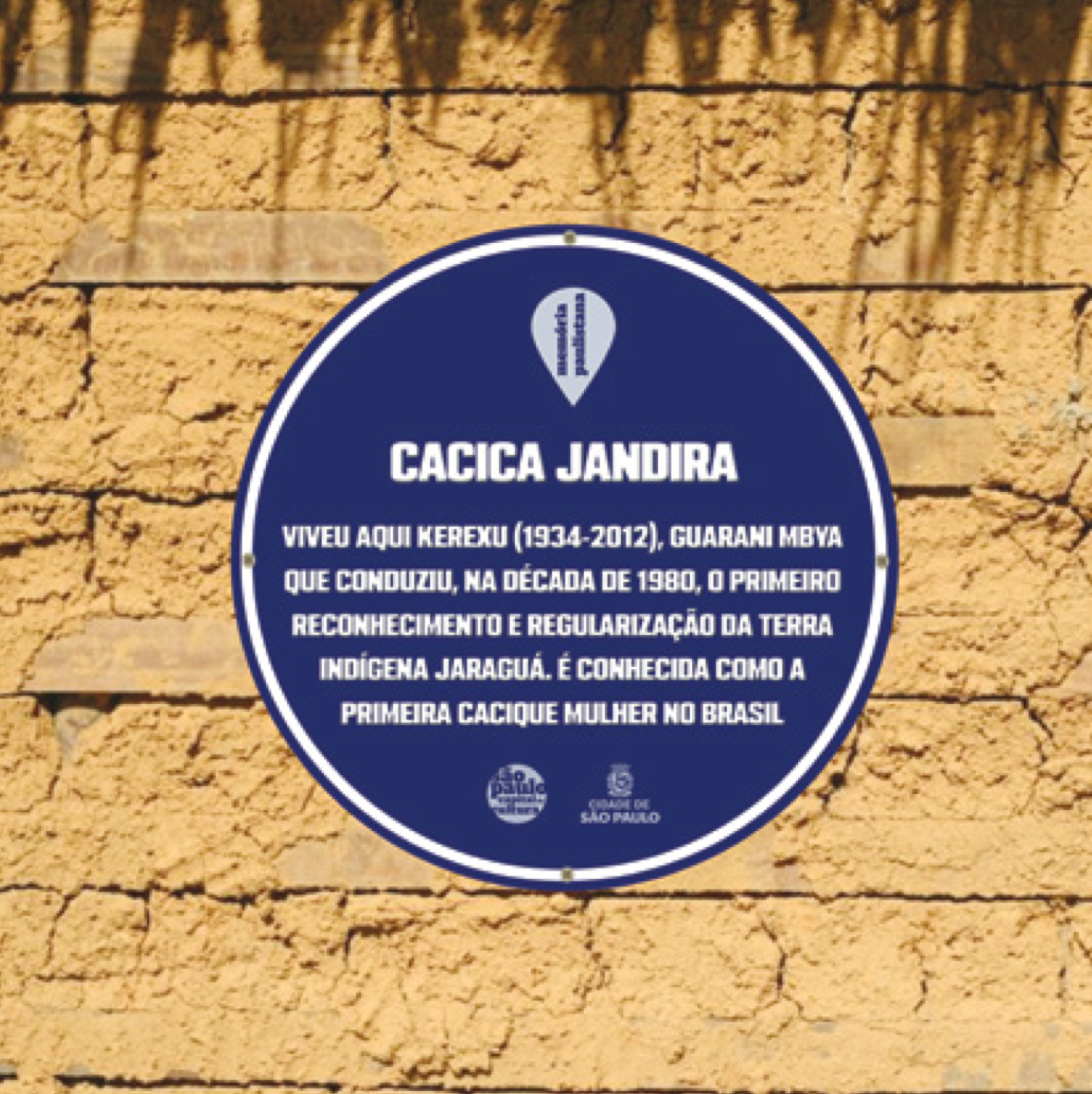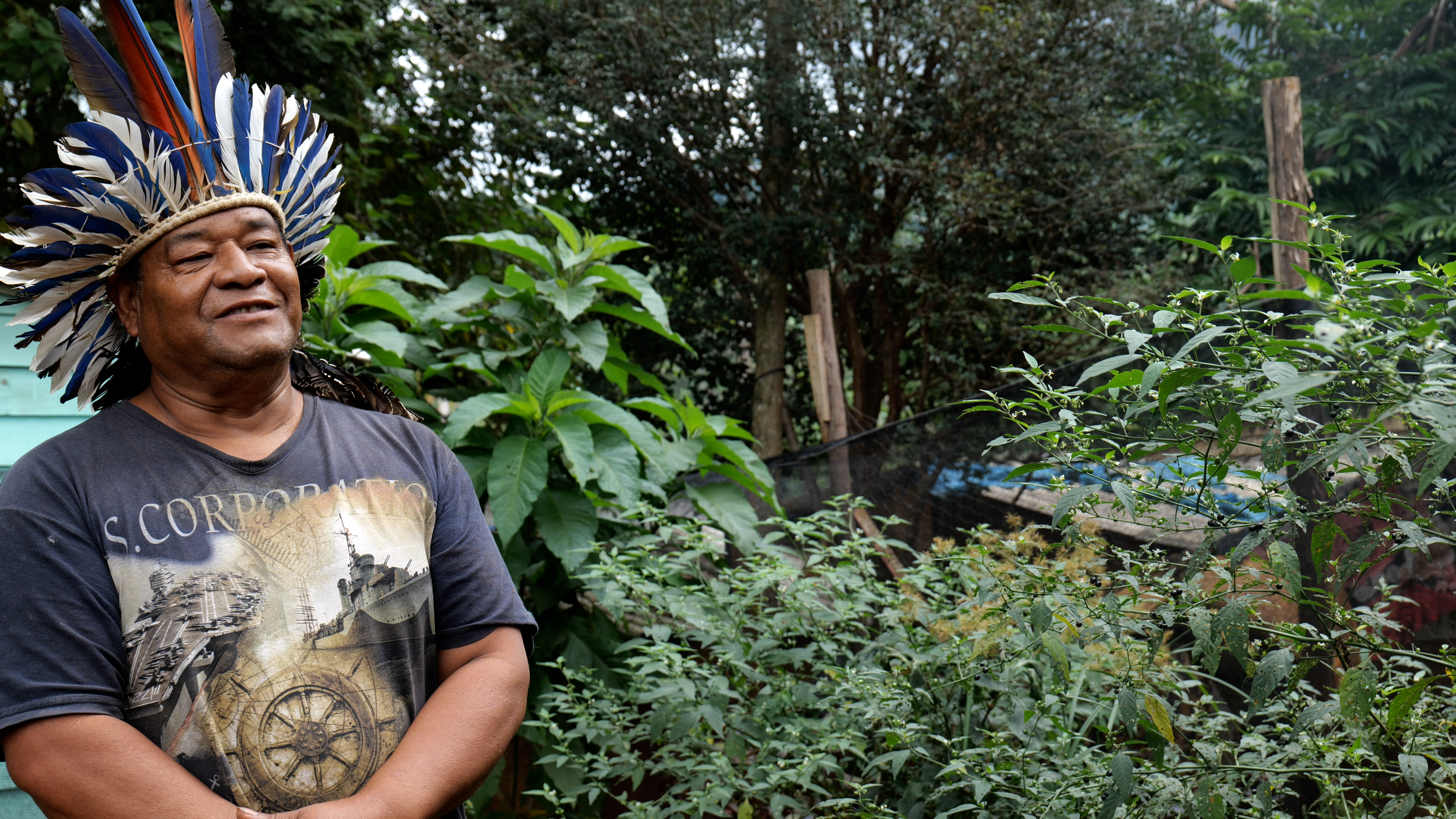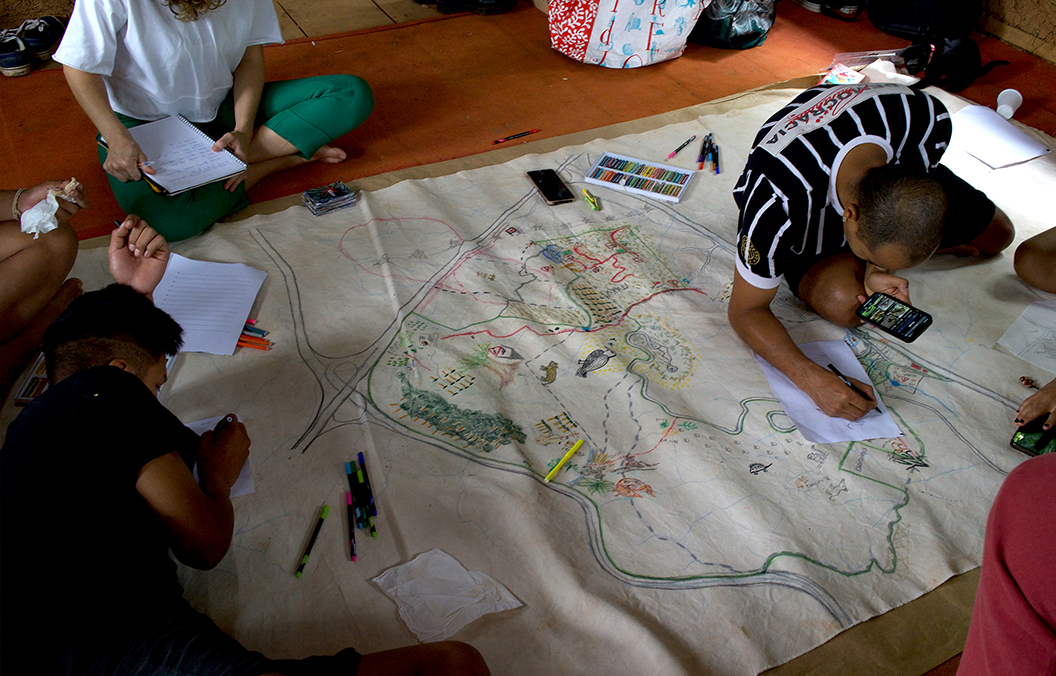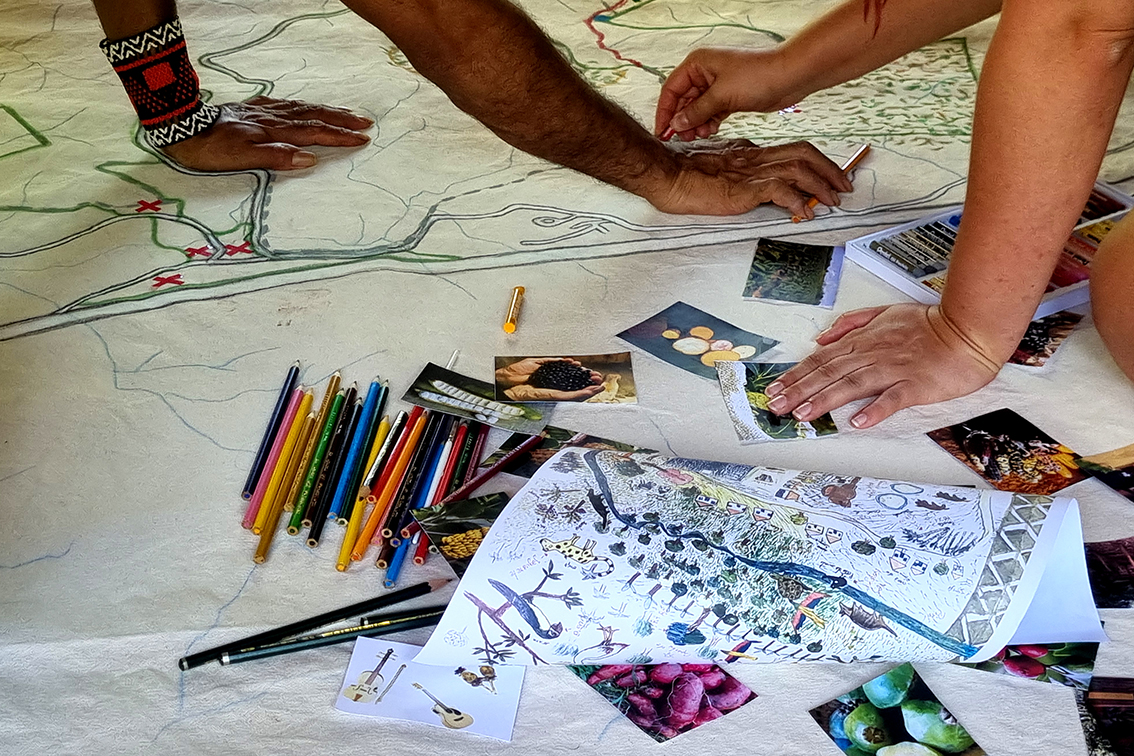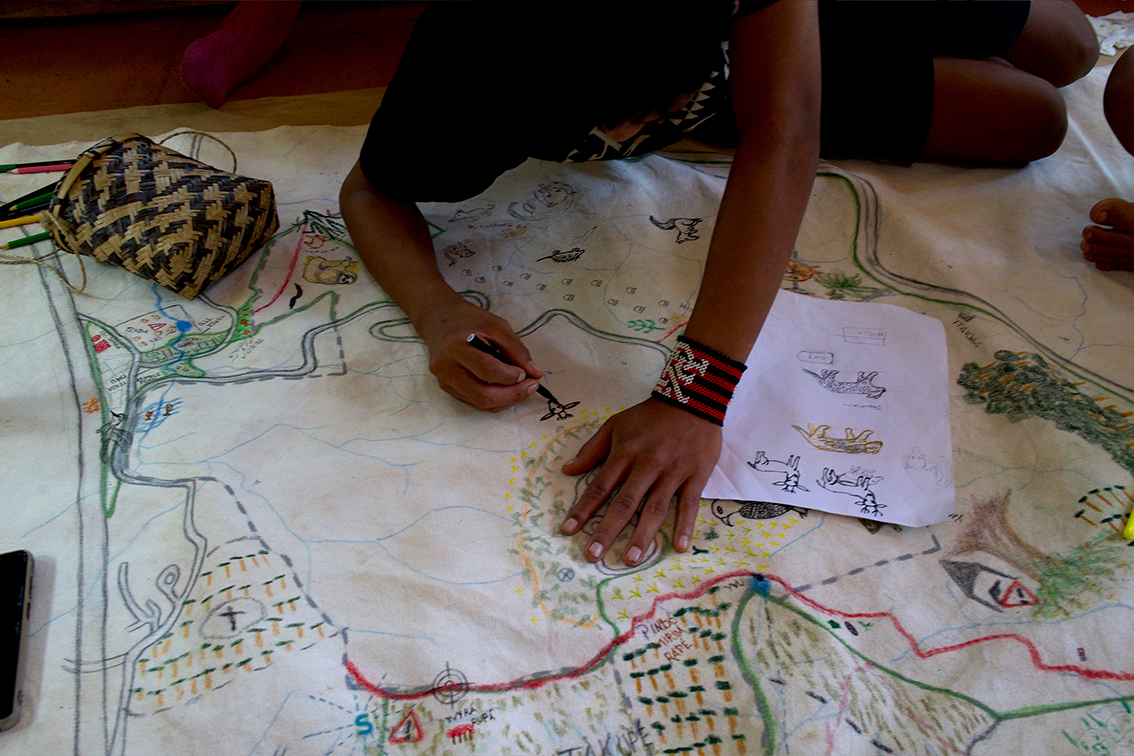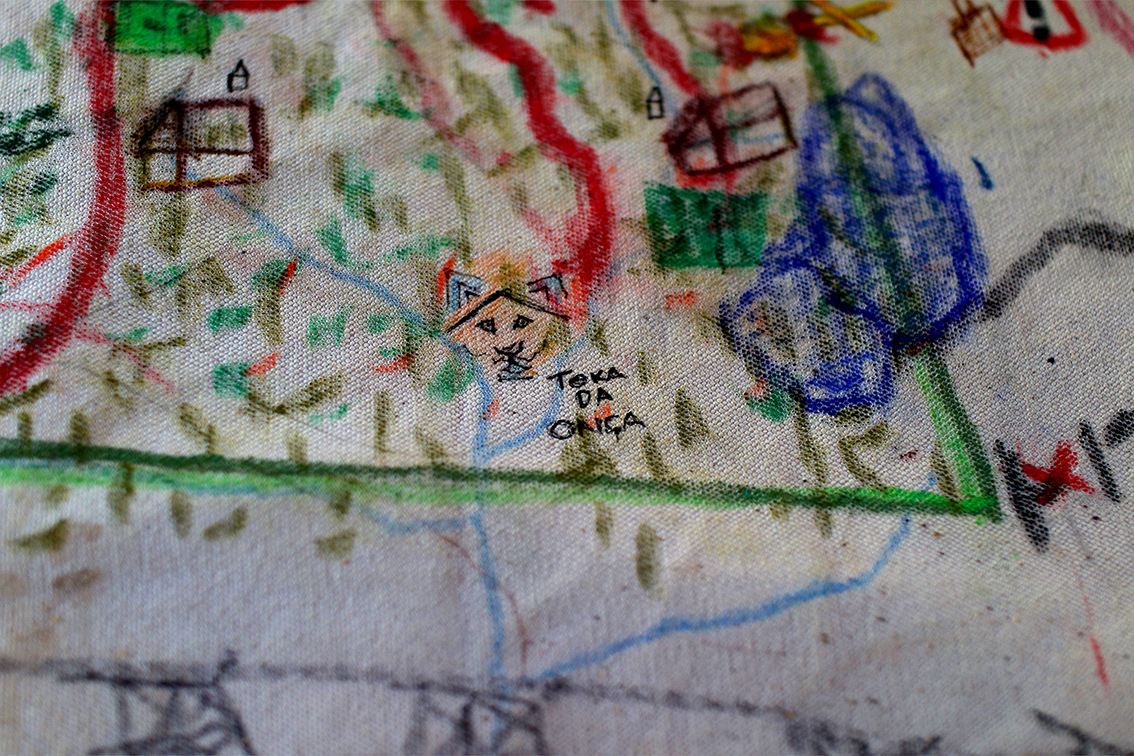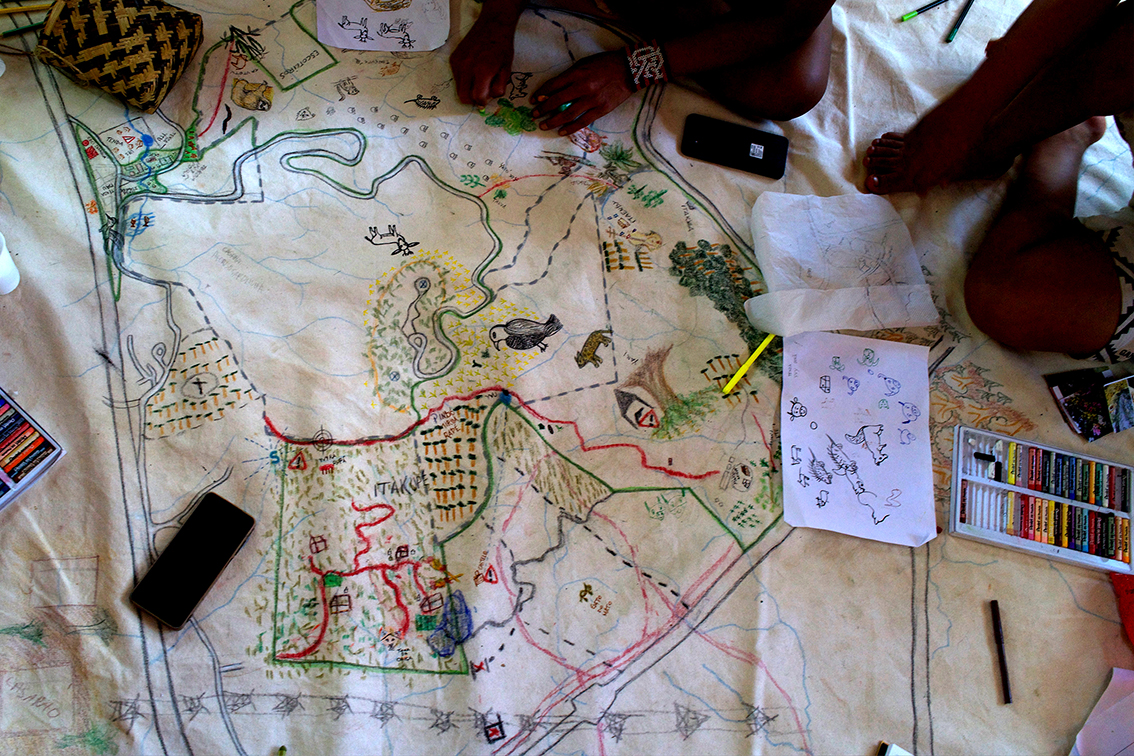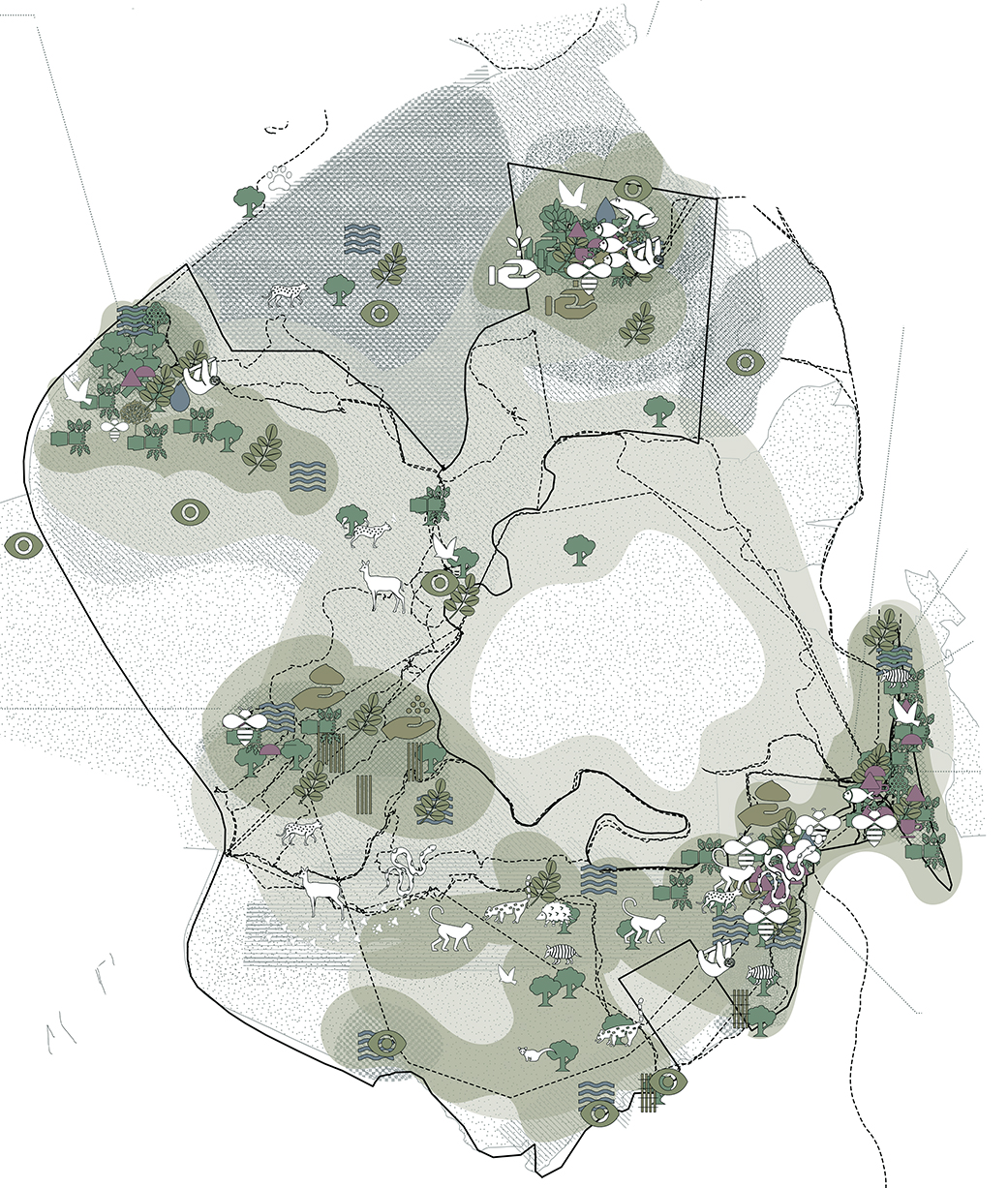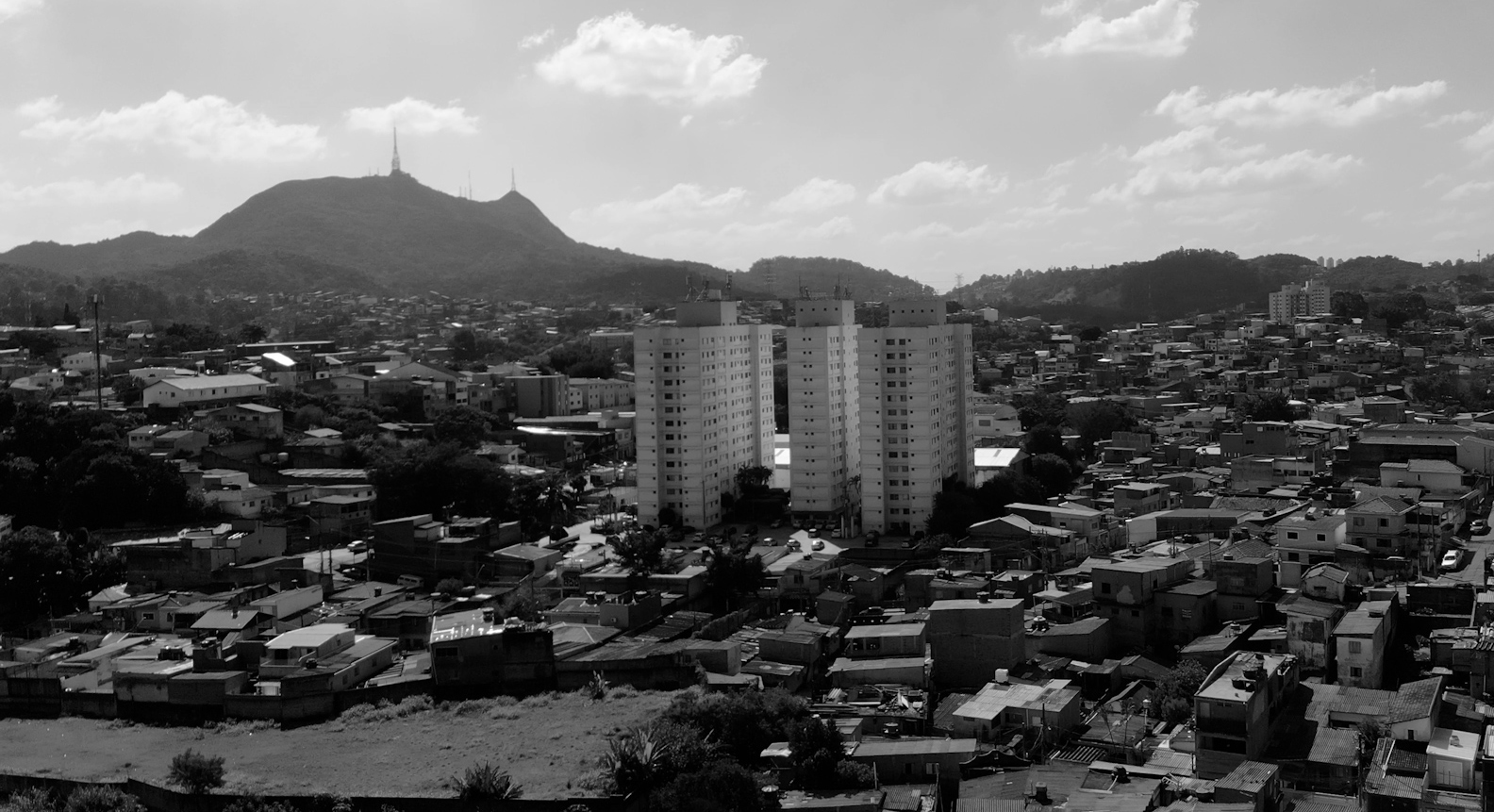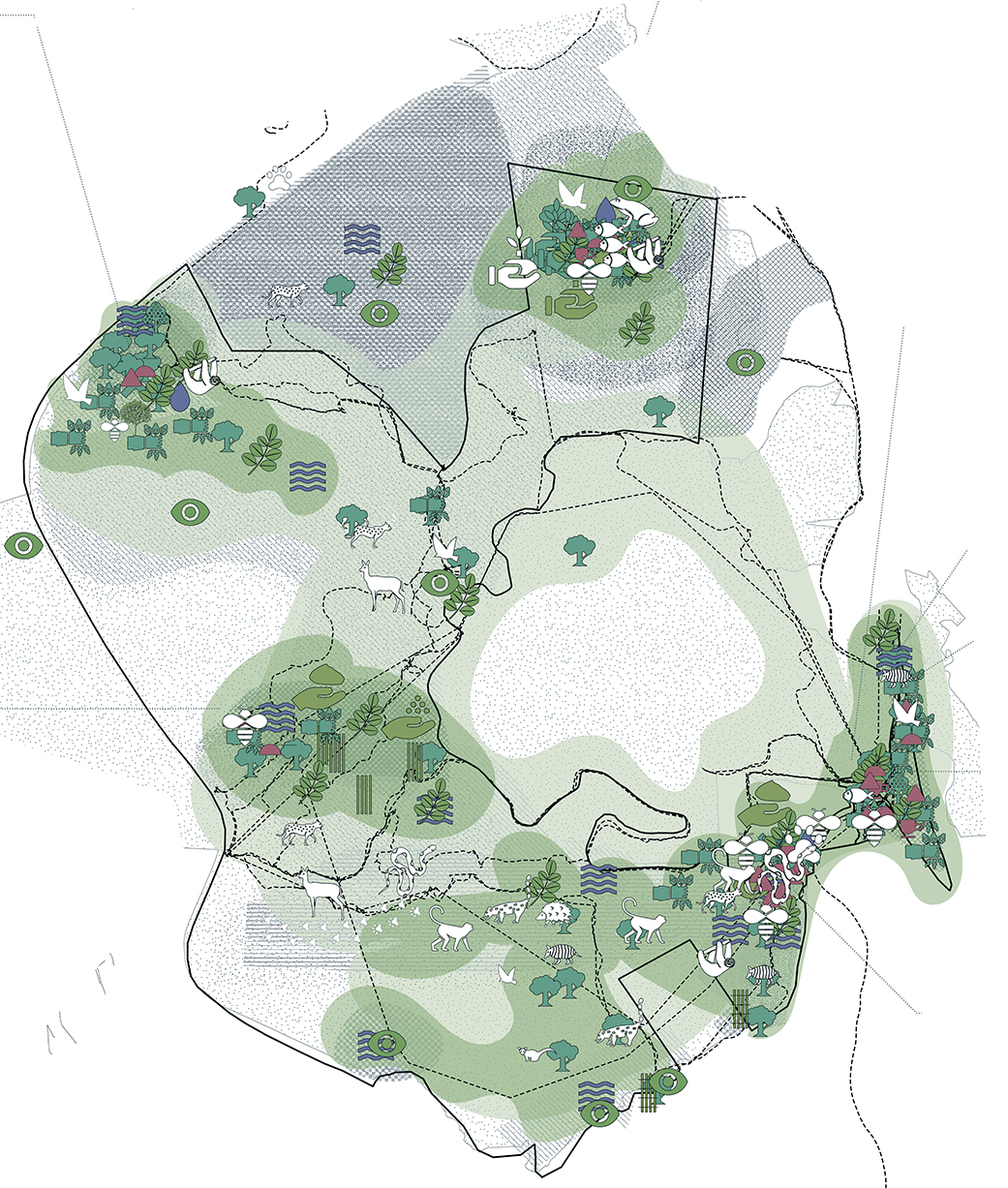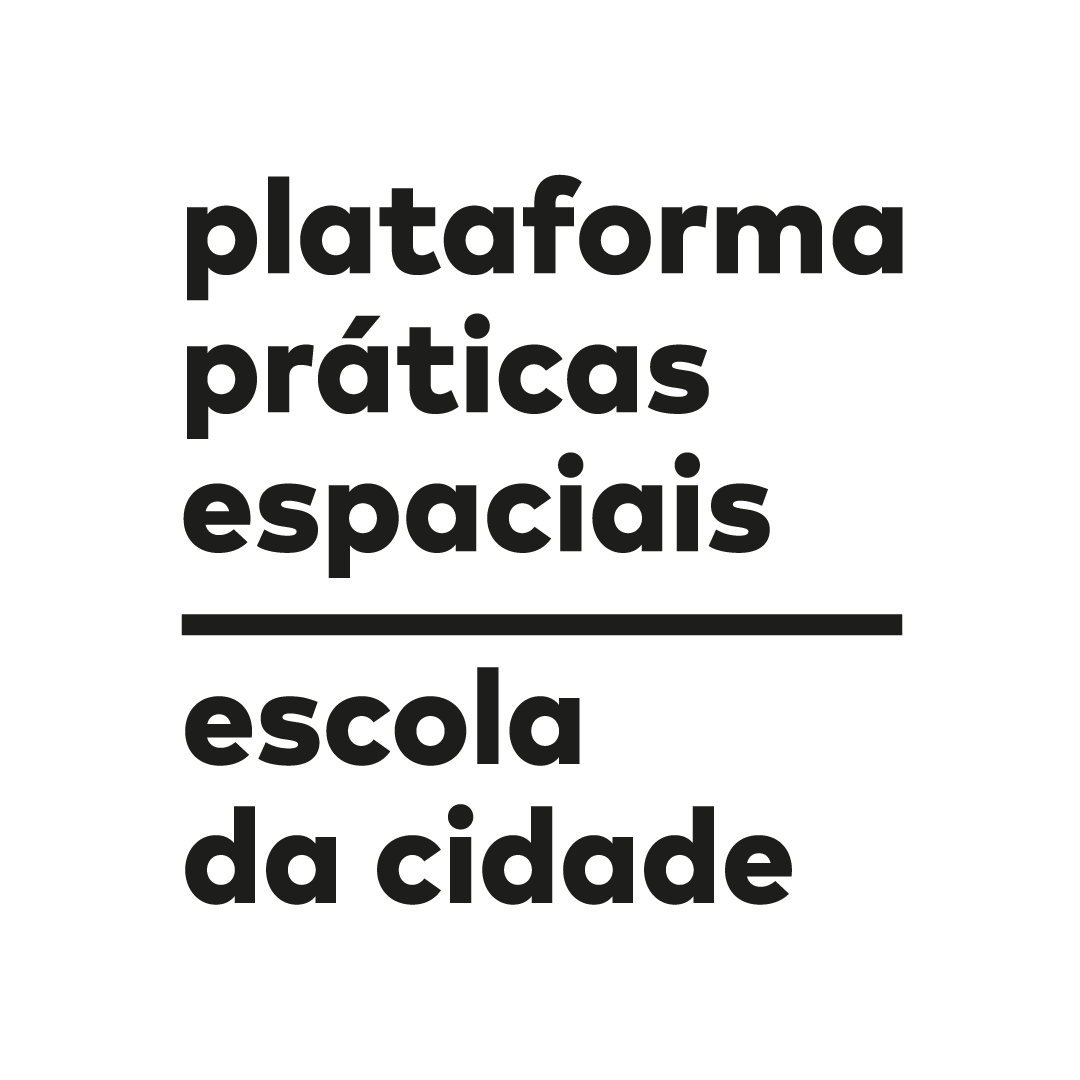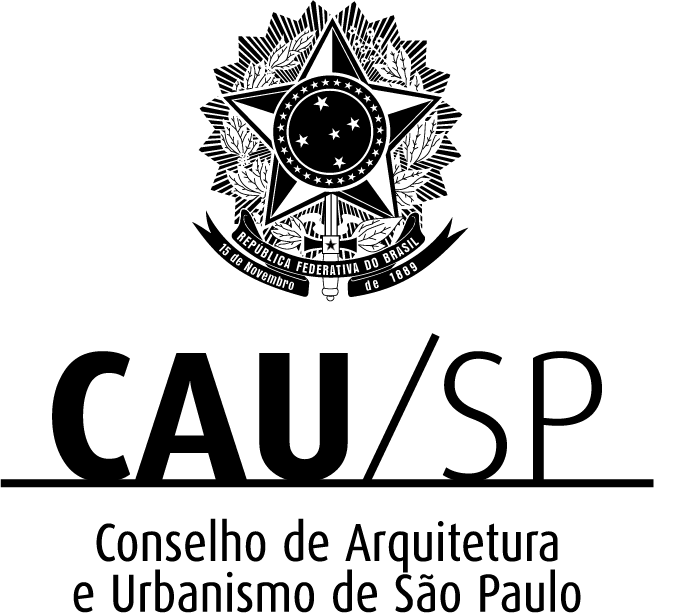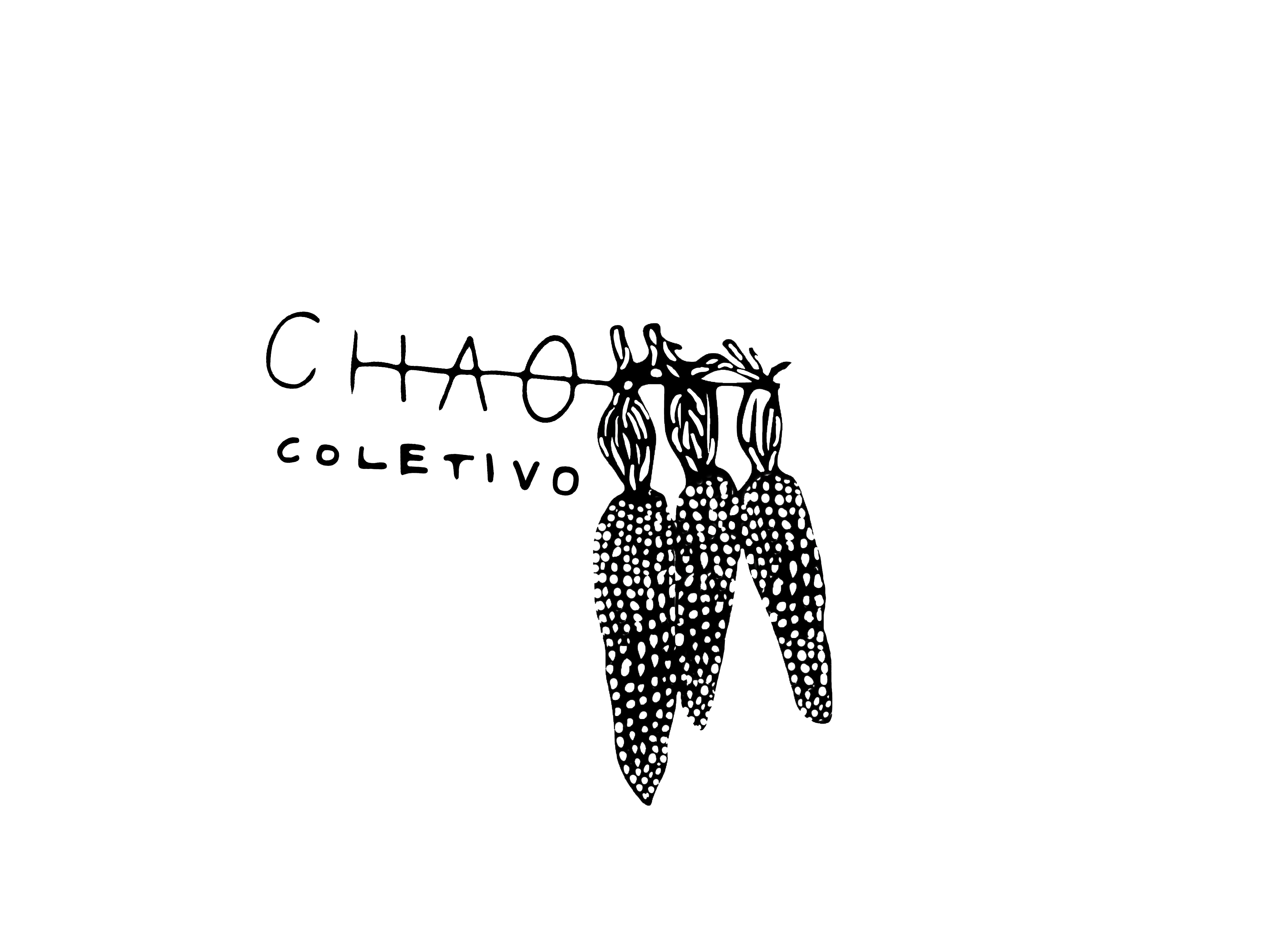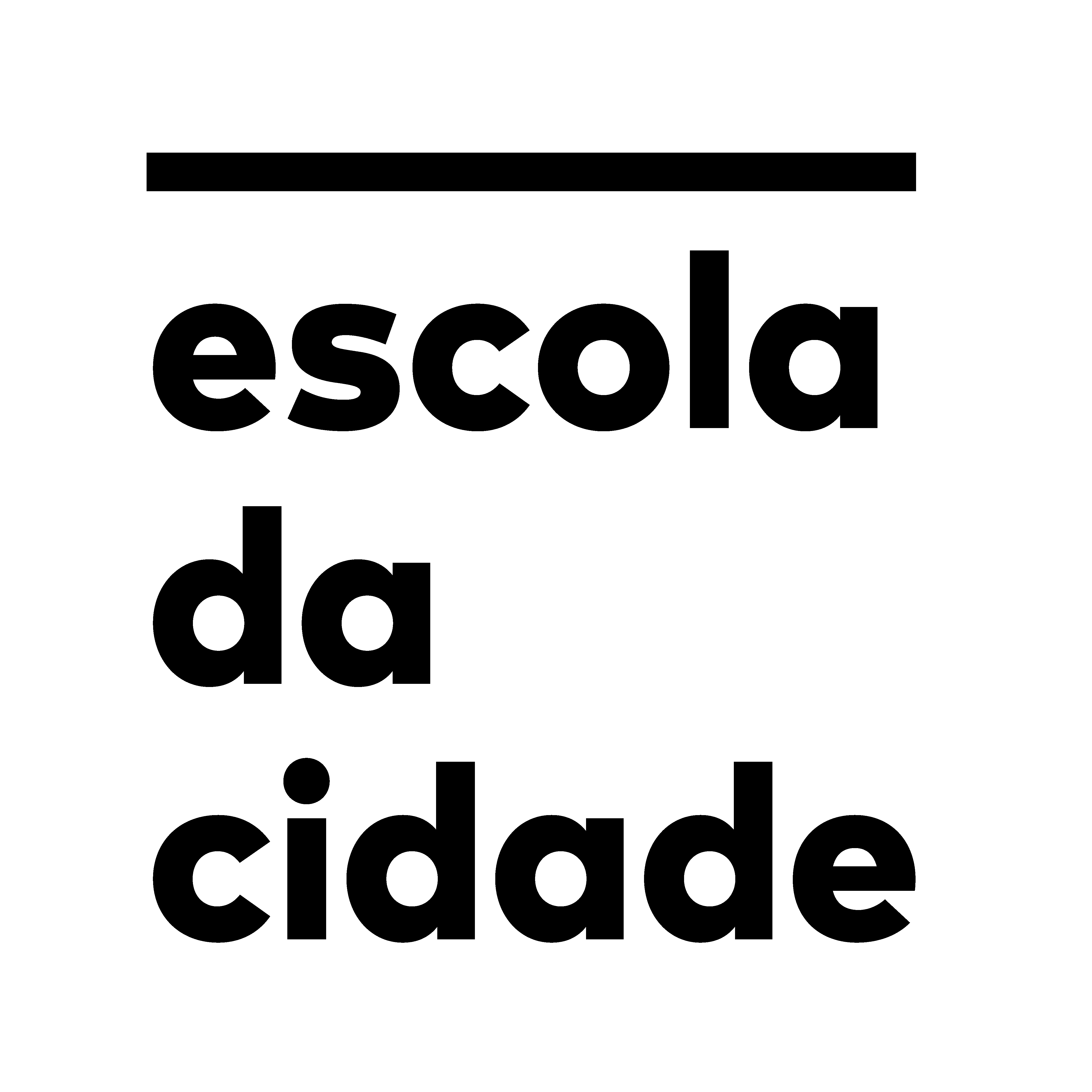TERRA INDÍGENA JARAGUÁ
A Terra Indígena Jaraguá é um território localizado na cidade de São Paulo, tradicionalmente habitado pelo povo Guarani Mbya. A área reconhecida e demarcada pelo Estado Brasileiro abrange 532 hectares, a maior parte ainda cobertos de Mata Atlântica. Atualmente, a TI Jaraguá conta com nove Tekoas (aldeias).
TEKOA YTU
Retomada e fundação: década de 1960
Uma das mais antigas tekoas, a tekoa Ytu, “Aldeia da Cachoeira”, foi fundada pela família de Joaquim Augusto Martim e Jandira Augusto Martim, primeira Cacica da Terra Indígena Jaraguá. O nome se refere ao Ribeirão das Lavras que chega à _Tekoa _por meio de uma pequena cachoeira. Cobrindo um perímetro de certa de 1.8 hectares, foi demarcada em 1987.

TEKOA PYAU
Retomada e fundação: década de 1990.
A tekoa Pyau, traduzido como “aldeia nova”, é a segunda aldeia do processo histórico de retomada da T.I. Jaraguá. Hoje é a comunidade com maior densidade populacional da terra indígena. A tekoa está cercada pela Rodovia dos Bandeirantes e pela Rua Comendador de Matos, infraestruturas que bloqueiam sua continuidade territorial e afetaram historicamente áreas de coleta, caça e cultivo.
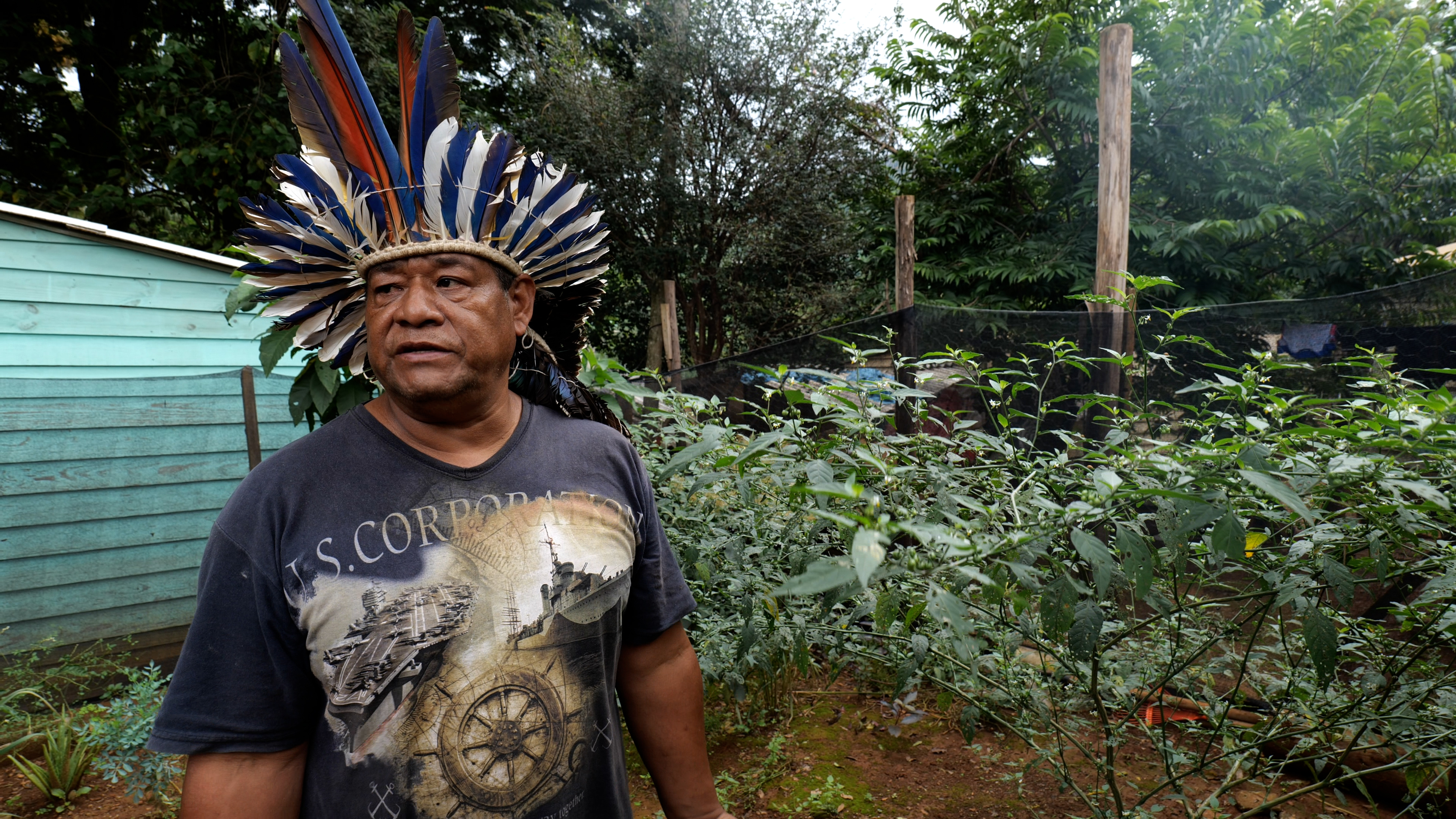
TEKOA ITAKUPE
Retomada e fundação: 2005
Situada no extremo norte da T.I. Jaraguá, a área onde está a Tekoa Itakupe é utilizada pelas comunidades Guarani desde as primeiras retomadas nos anos 1950 e 1960. Fundada em 2014, hoje é formada por três núcleos: Sol nascente, Toka da Onça e (confirmar como querem chamar o terceiro núcleo). Por estar localizada do outro lado do Pico do Jaraguá, próxima de suas formações rochosas, foi nomeada de Itakupe, que pode ser traduzido como “atrás da pedra”.

TEKOA ITAWERA
Retomada e fundação: 2014
Fundada pela Cacica Ara Poty (Maria) em 2014, a Tekoa Itawera recuperou uma área antes destinada ao descarte de lixo. Hoje, a comunidade se dedica à recuperação ambiental e cultural, com ações como o reflorestamento com espécies nativas, o cultivo de alimentos tradicionais como o milho Guarani, bem como um vasto trabalho de artesanato. O nome da aldeia pode ser traduzido como “pedra reluzente”.
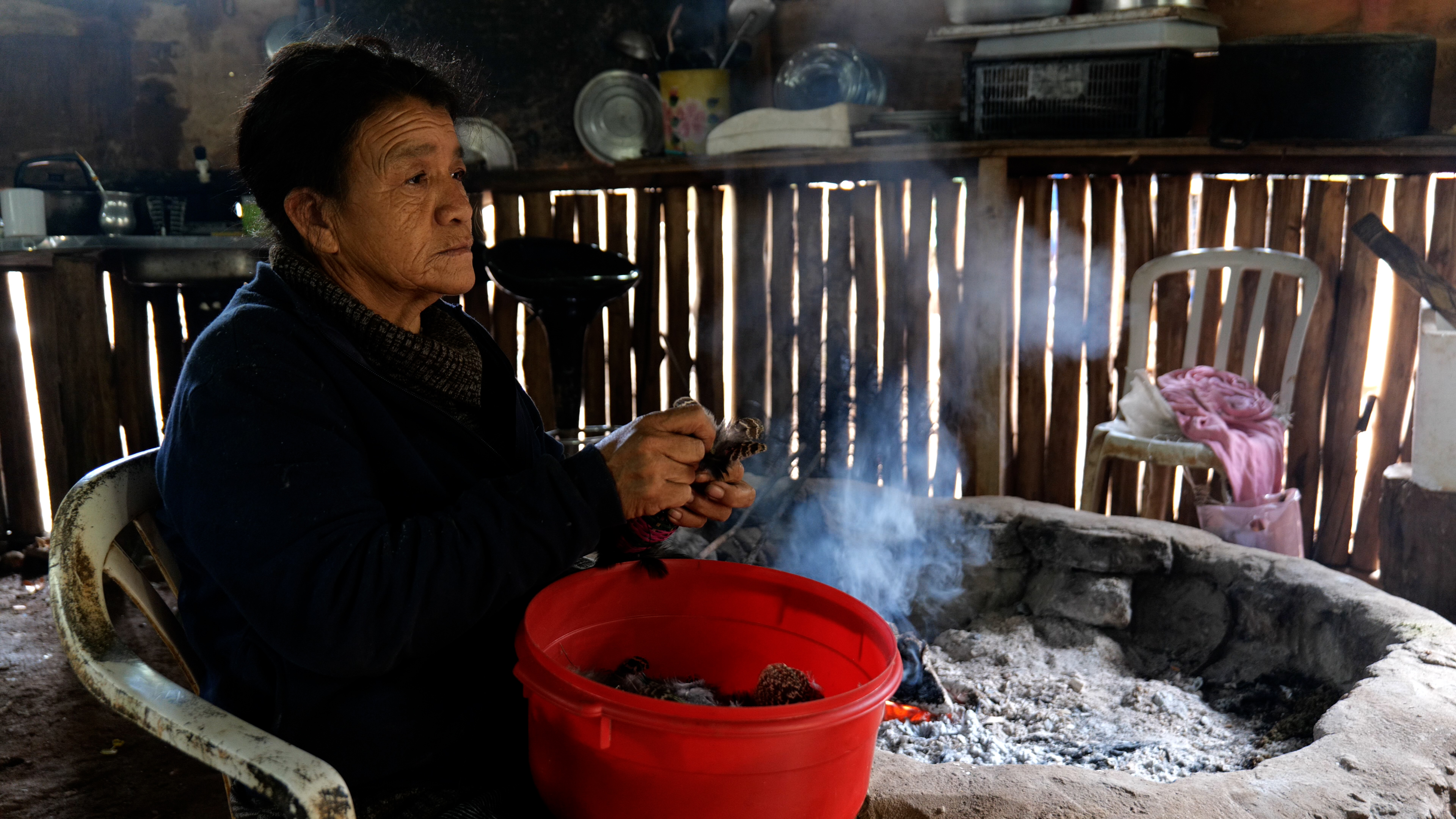
TEKOA ITAENDY
Retomada e fundação: 2017
Desde sua retomada em 2017, a Tekoa Itaendy, “aldeia da pedra amarela”, vem promovendo práticas de manutenção da biodiversidade como o reflorestamento com espécies nativas, plantio de roças com alimentos tradicionais, bem como a reintrodução e criação de espécies de abelhas nativas.
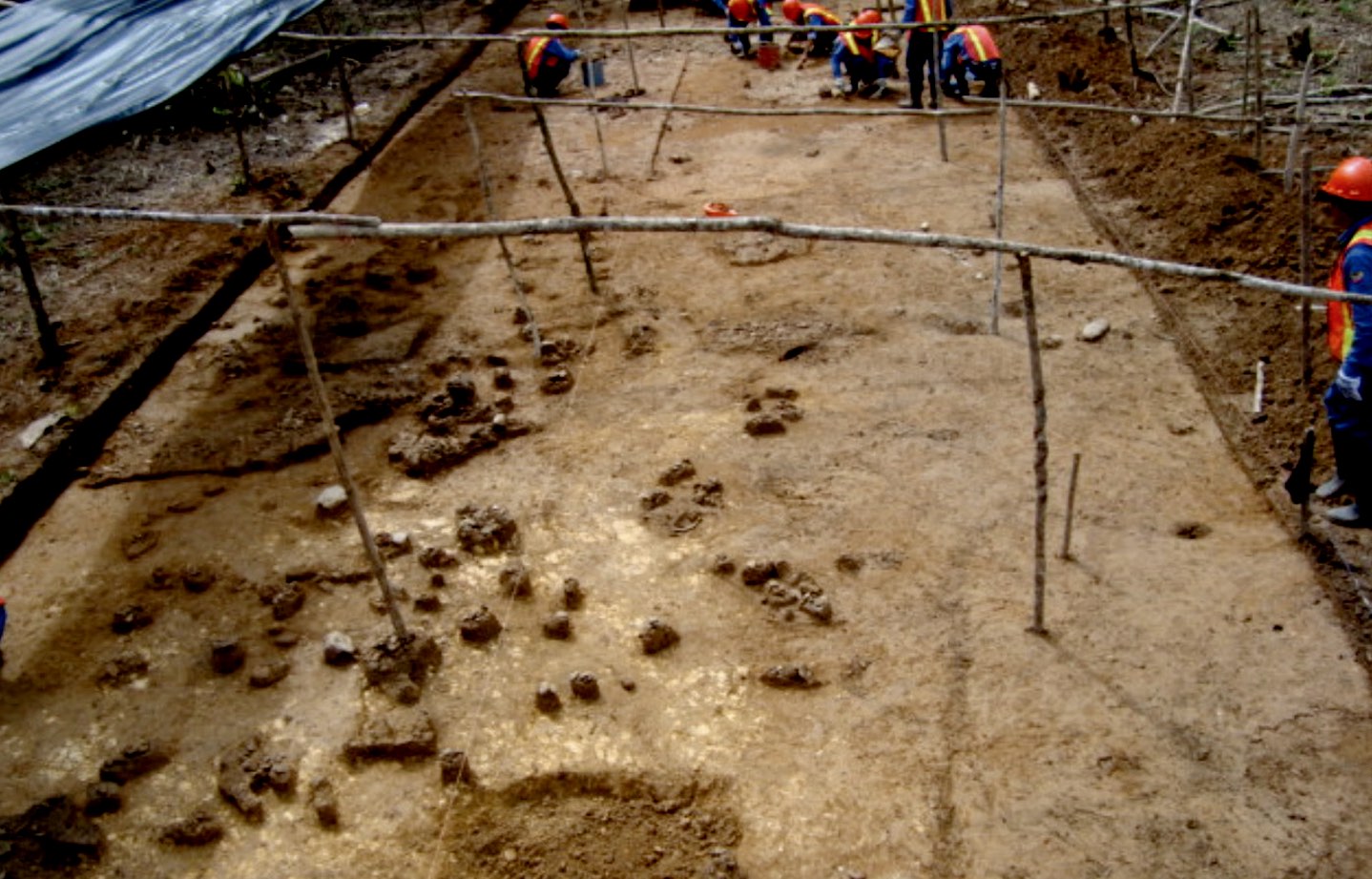
TEKOA YVY PORÃ
Retomada e fundação: década de 2018.
Assim como Itawera, Yvy Porã se estabeleceu em uma área antigamente destinada ao descarte de lixo urbano, situada no pé das matas do Pico do Jaraguá. Ao longo dos anos, a tekoa tornou-se importante referência de práticas ecológicas de des-poluição, recuperação e manutenção da Mata Atlântica. Yvy Porã, traduzido como “terra boa” ou “terra bela”, também é uma referência de práticas de recuperação de diversas espécies nativas de abelhas, como a jate’i (jatai), considerada sagrada.
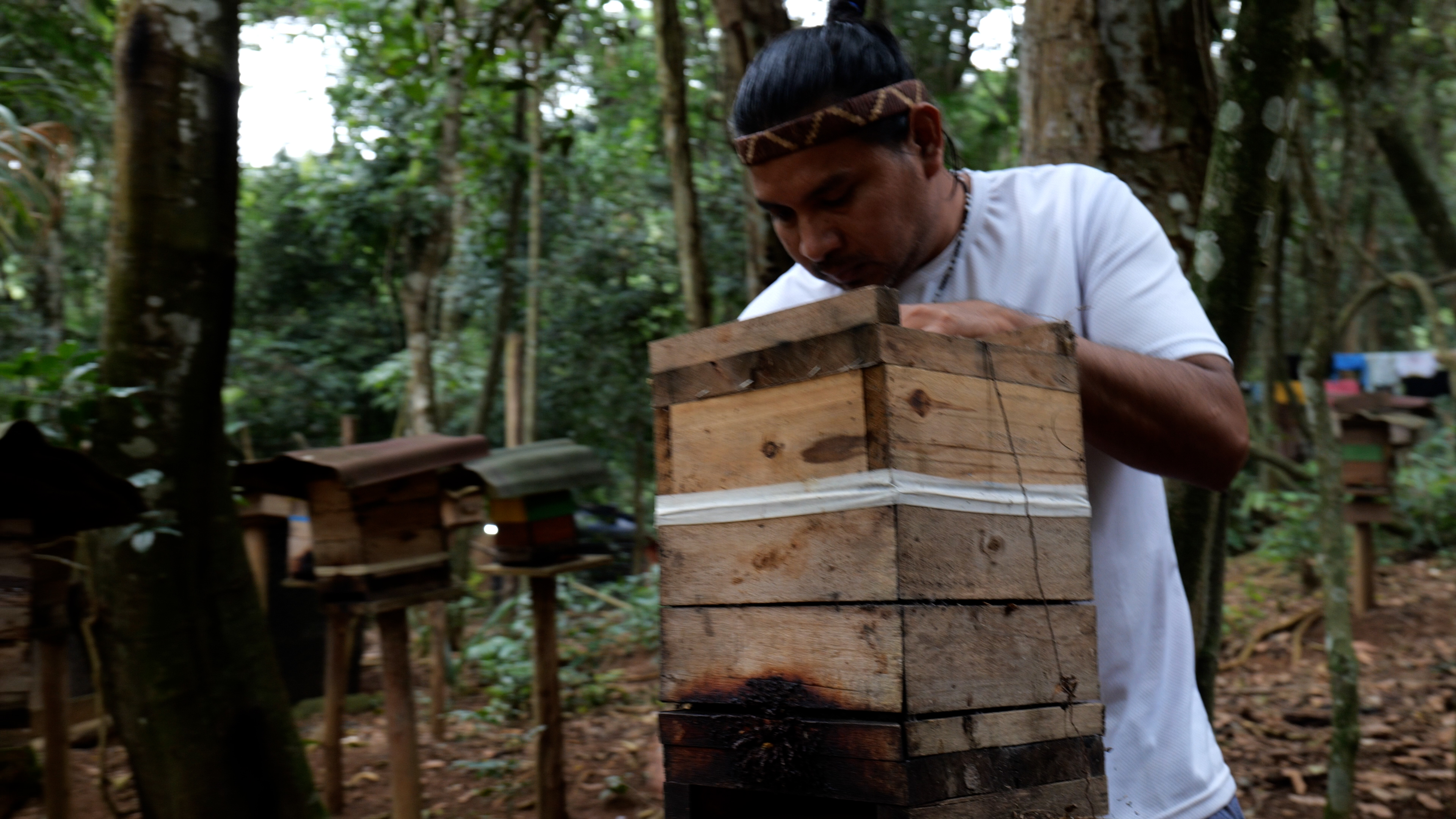
TEKOA PINDÓ MIRIM
Retomada e fundação: 2023
Uma das tekoas mais recentes da T.I. Jaraguá, Pindó Mirim foi retomada em 2023. Situada no extremo noroeste da área demarcada, a comunidade vem desenvolvendo um forte trabalho de reparação ambiental, com foco na regeneração das áreas de Mata Atlântica afetadas pela construção do Rodoanel e plantações de eucaliptos. Destaca-se o reflorestamento com mais de 1500 mudas de árvores nativas e 300 mudas de árvores frutíferas.
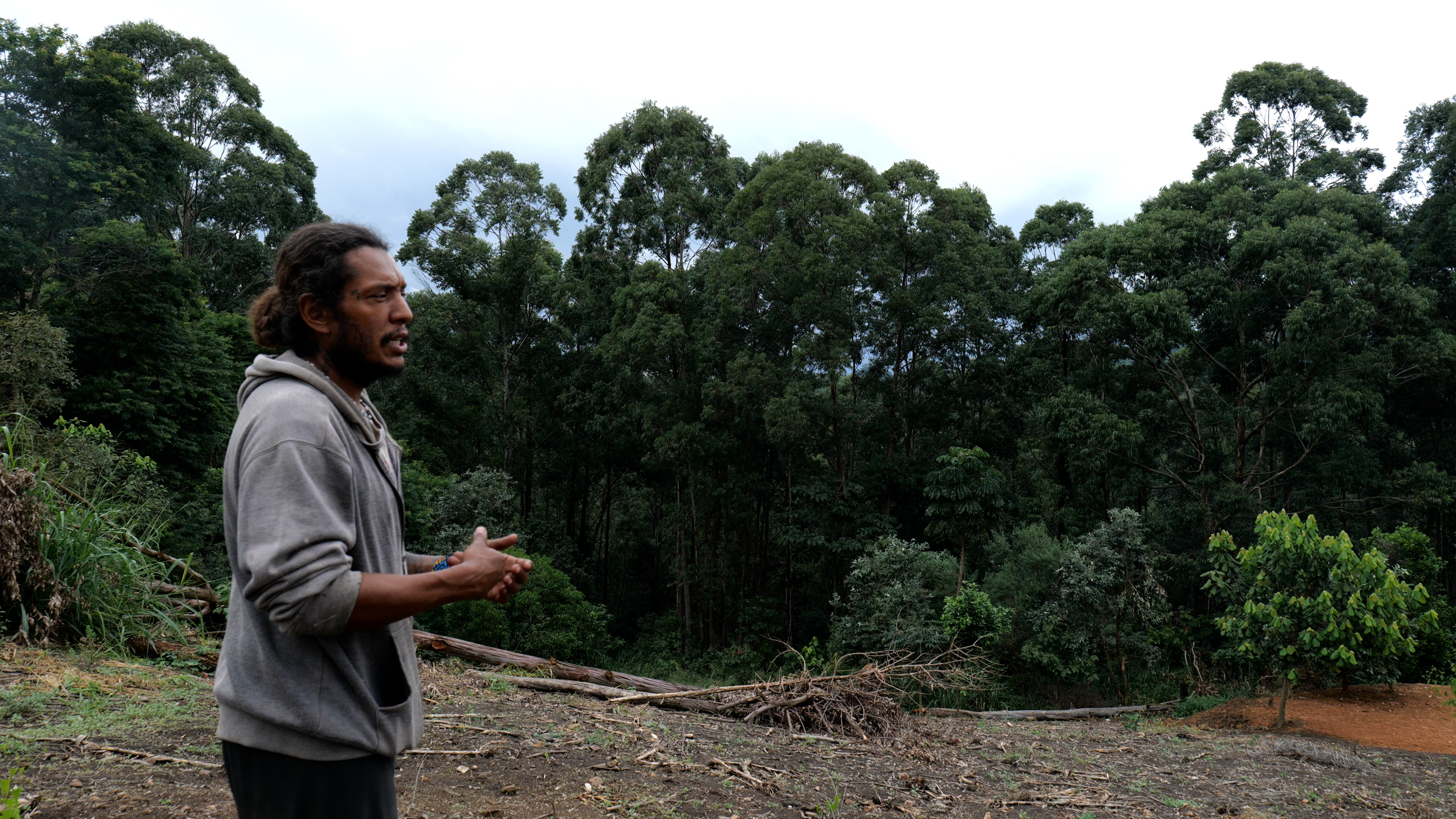
TEKOA MIRIM
Retomada e fundação: 2023
Tekoa Mirim, chamada “pequena aldeia”, está localizada ao lado da Tekoa Pyau. Assim como outros núcleos habitacionais, seus moradores têm desenvolvido várias práticas de cuidado e reparação do território. Destaca-se o plantio de mudas nativas, frutíferas e hortaliças ao longo do caminho que beira a Rodovia dos Bandeirantes, conectando a Tekoa Pyau à Tekoa Mirim e à Ka’aguy Mirim.
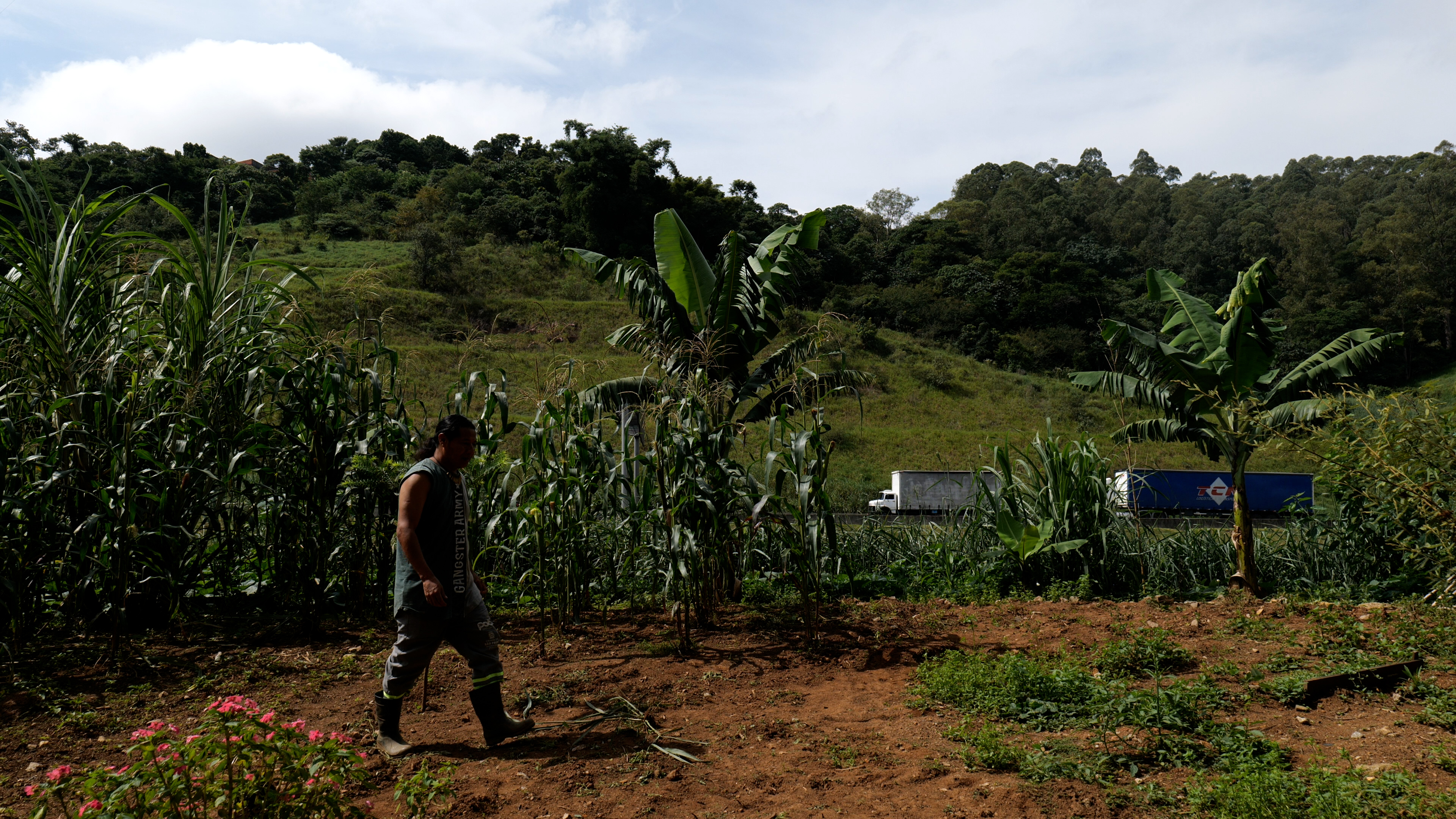
TEKOA KA'AGUY MIRIM
Retomada e fundação: 2024
A Tekoa Ka’aguy Mirim é outra retomada adjacente à Tekoa Pyau. Com o nome de “pequena floresta”, situa-se no limite da Terra Indígena, entre a Rodovia dos Bandeirantes e a Rua Antônio Cardoso Nogueira. A aldeia é considerada por seus moradores como um importante ponto de cuidado de espécies nativas medicinais presentes neste local, motivo que impulsionou a retomada da área.
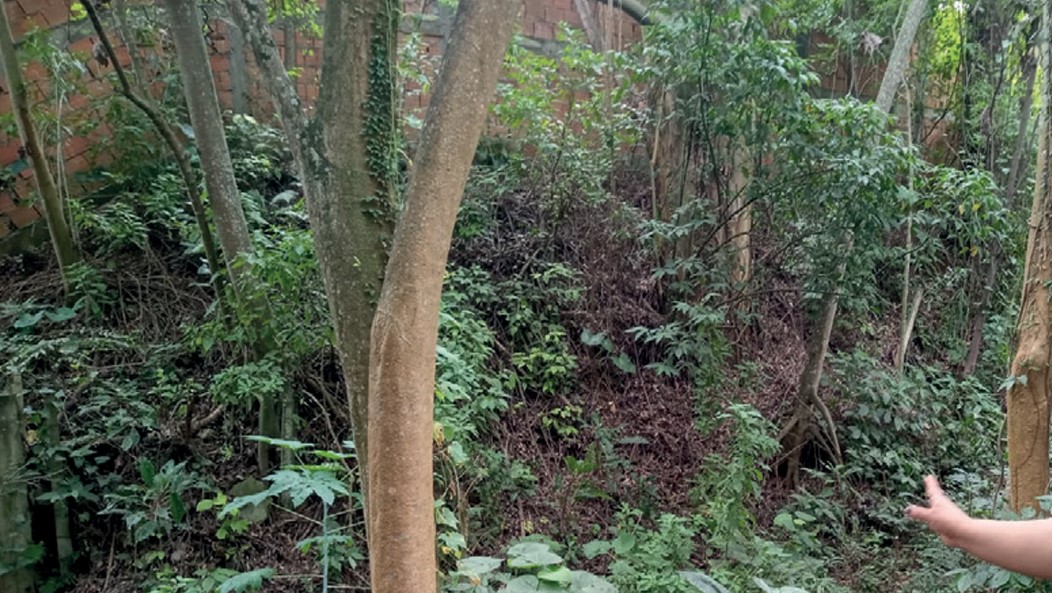
Em 1554 funda-se o povoado de São Paulo dos Campos de Piratininga, futura cidade de São Paulo, onde hoje encontra-se o Pateo do Collegio.
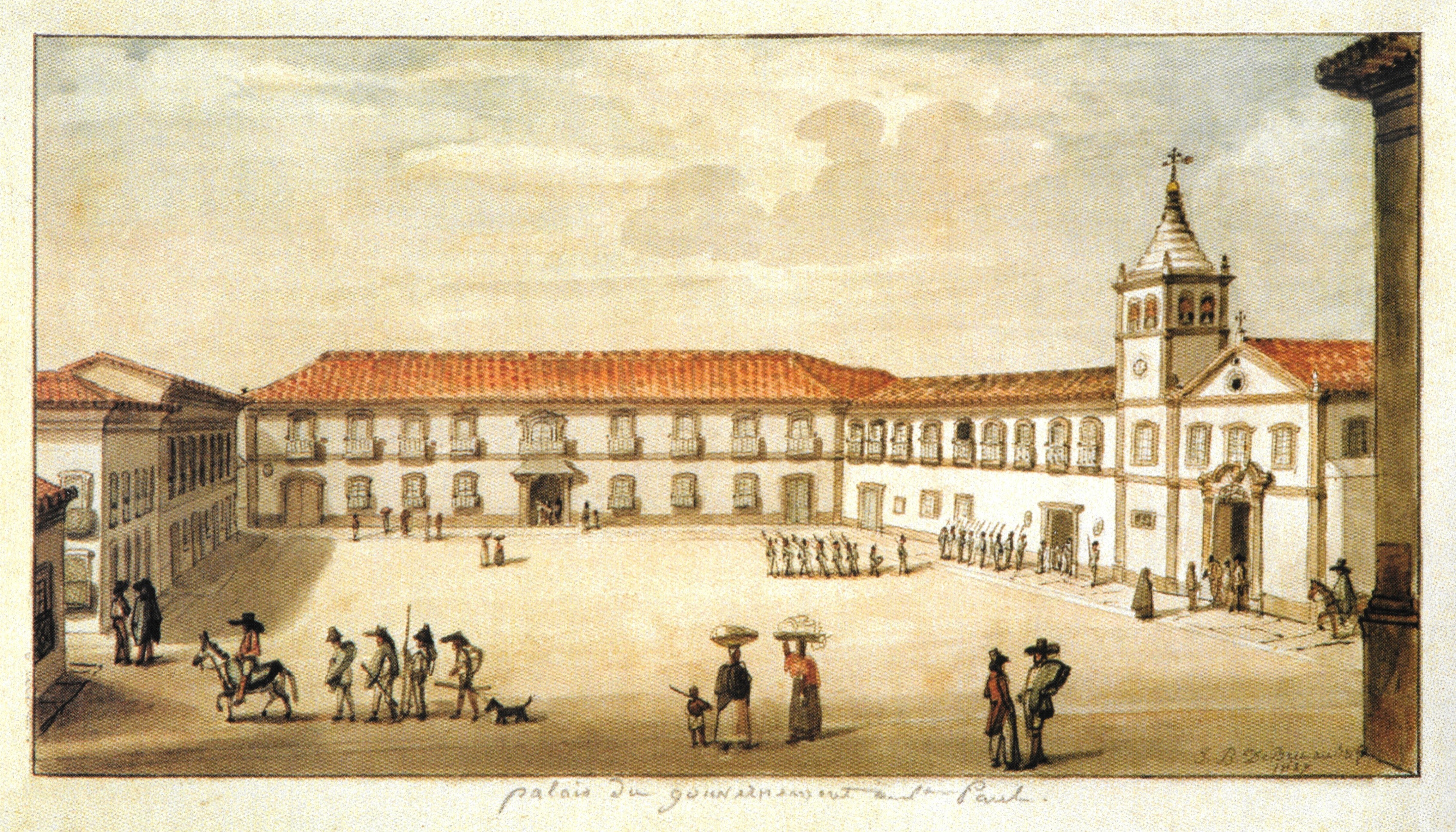
Em 1560, ao sul do Pico do Jaraguá, na região de Barueri, José de Anchieta mandou erguer outro aldeamento para concentração e catequização dos indígenas.
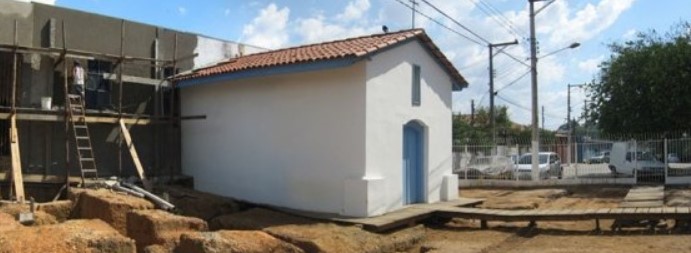
Pouco depois, em 1597, o bandeirante Afonso Sardinha encontra ouro na região do Jaraguá. Estabelece uma grande propriedade na área com a construção de um complexo Casa Grande – Senzala ao pé do morro.
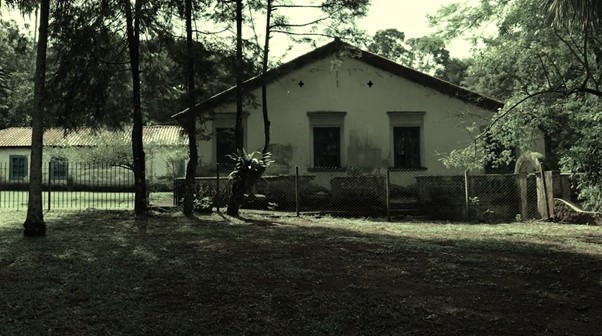
26 de setembro de 2013: Em protesto contra a Proposta de Emenda a Constituição 215/2000, que visava transferir do Poder Executivo para o Congresso Nacional a competência para a demarcação de terras indígenas e quilombolas, ativistas Guarani bloqueiam a Rodovia dos Bandeirantes. O protesto também pede a demarcação das T.I.s Jaraguá e Tenondé Porã

01 de outubro de 2013: Em uma caminhada da Avenida Paulista até o Monumento às Bandeiras, ativistas Guarani realizam “Ato de Defesa dos Direitos Indígenas e da Constituição Federal” contra a PEC 215
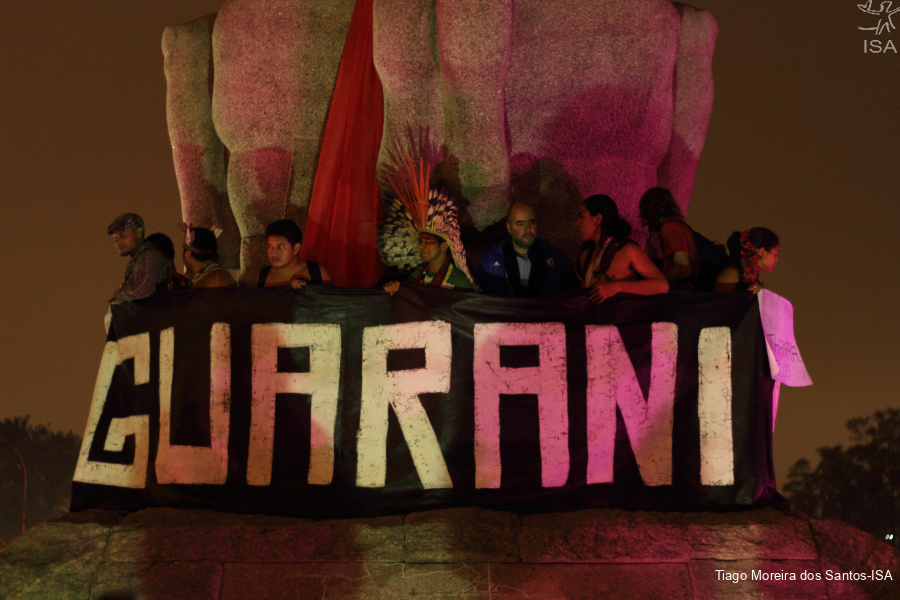
16 de abril de 2014: lançamento da campanha “Resistencia Guarani SP” com ato no Pateo do Colégio e ocupação do Museu Anchieta
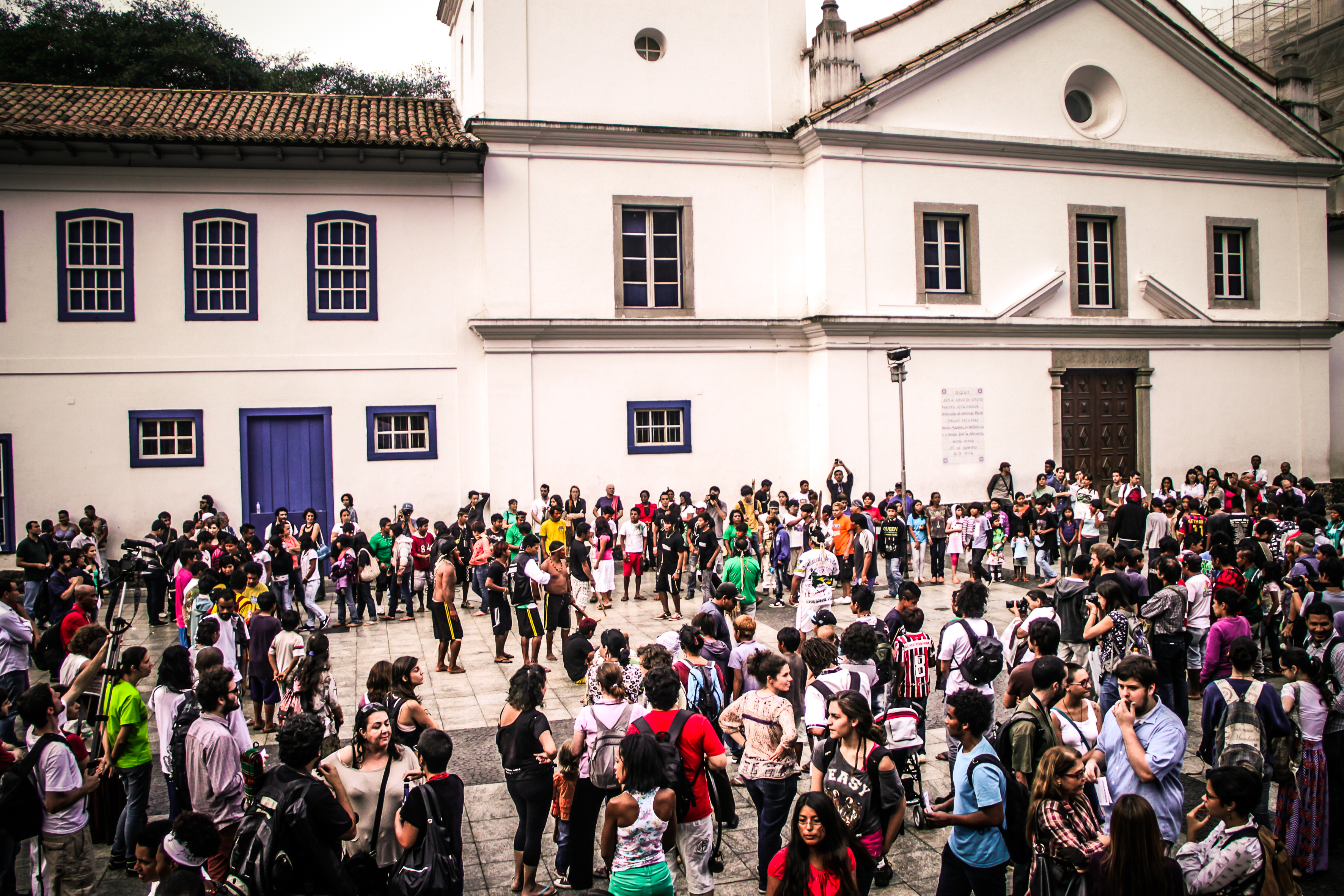
24 de abril de 2014: protesto partindo do MASP até a praça Roosevelt, exigindo a demarcação das T.I.s Jaraguá e Tenondé Porãa
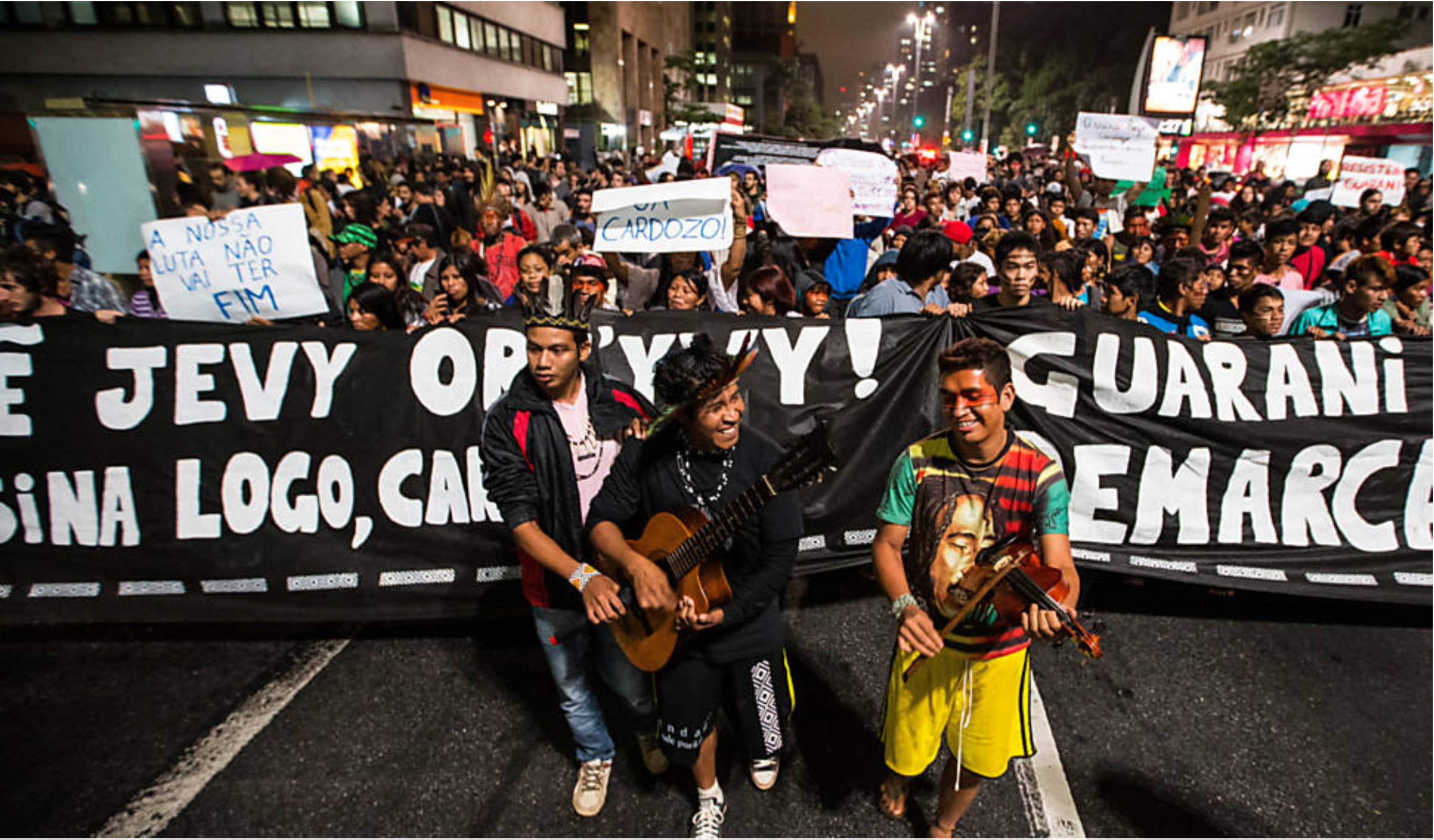
06 de junho de 2014: protesto na Assembleia Legislativa de São Paulo e no Monumento às Bandeiras pelo arquivamento da PEC 215 e pela demarcação das T.I.s Jaraguá e Tenondé Porã

05 de maio de 2016: ativistas Guarani ocupam a sede da Secretaria da Presidência da República em São Paulo, na Avenida Paulista, em protesto pela demarcação das T.I.s Jaraguá e Tenondé Porã

14 – 16 de setembro 2017: em protesto contra a anulação da demarcação da Terra Indígena Jaraguá pelo governo de Michel Temer, lideranças Guarani realizam uma série de protestos em São Paulo. No dia 30 de agosto, uma ampla mobilização toma a Avenida Paulista. Quinze dias depois, entre os dias 14 e 16 de setembro, ativistas Guarani ocupam o Pico do Jaraguá e desativam as torres transmissoras, cortando o sinal de telefonia e televisão para uma vasta região da cidade de São Paulo
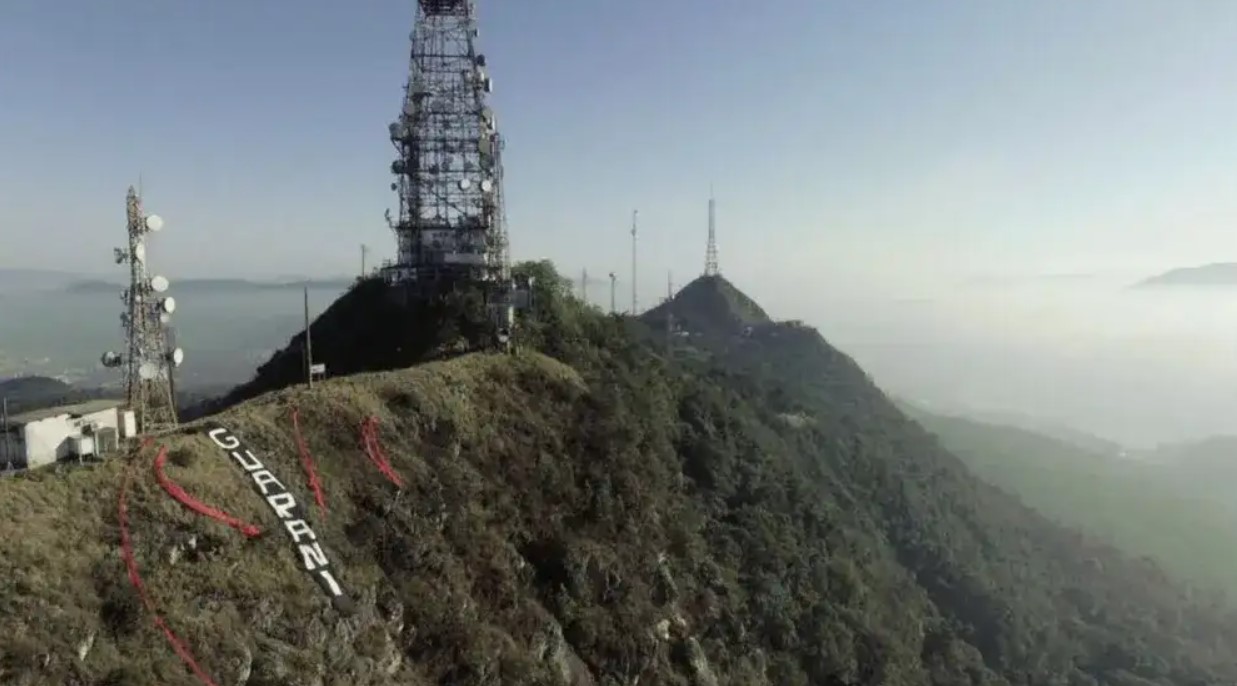
Janeiro-Março de 2020: ativistas Guarani ocupam o terreno onde seria construído o condomínio residencial “Reserva Jaraguá-Carinás”, situado próximo à aldeia Pyau. Executado pela construtora Tenda, o empreendimento levou à derrubada de cerca de quatro mil árvores em uma área da Reserva da Biosfera do Cinturão Verde de São Paulo. Chamada de Yary Ty, a ocupação dura até o mês de março, quando é removida pela Polícia Militar
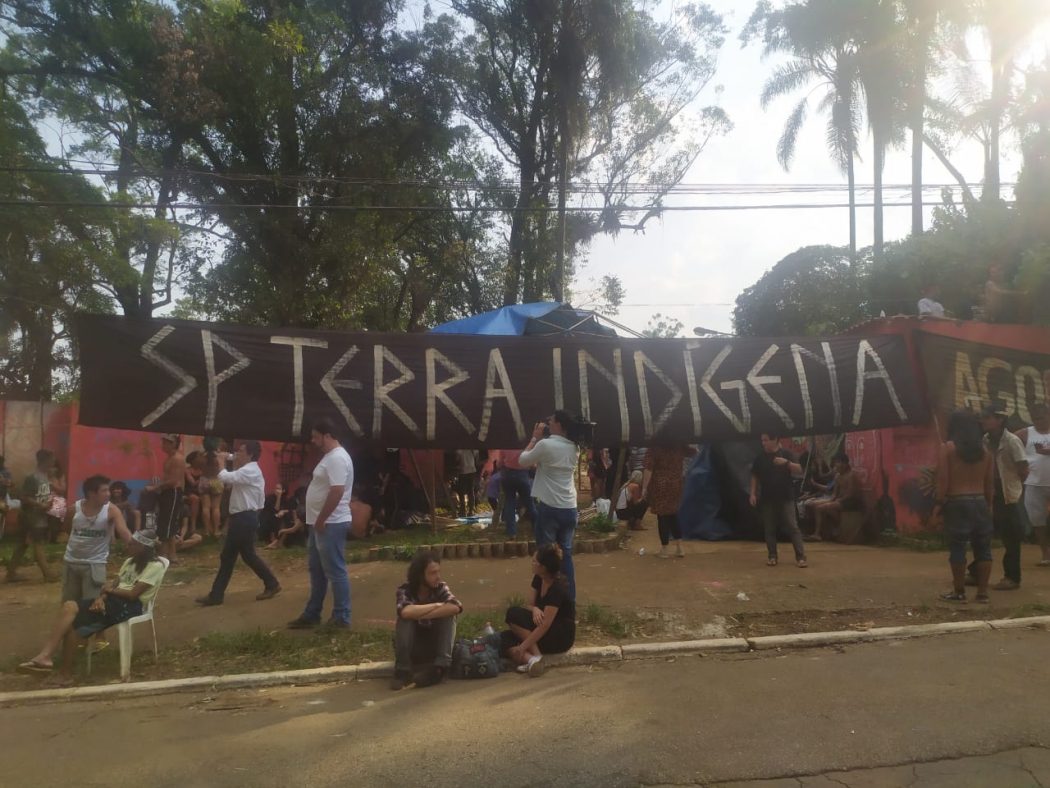
Junho de 2021: a volta da discussão sobre o Marco Temporal no Congresso Nacional desencadeia uma série de protestos de organizações indígenas. No dia 25 de junho, ativistas Guarani bloqueiam a Rodovia dos Bandeirantes. Cinco dias depois ocupam o Parque Estadual do Jaraguá e as antenas. Simultaneamente ocorrem manifestações na Avenida Paulista
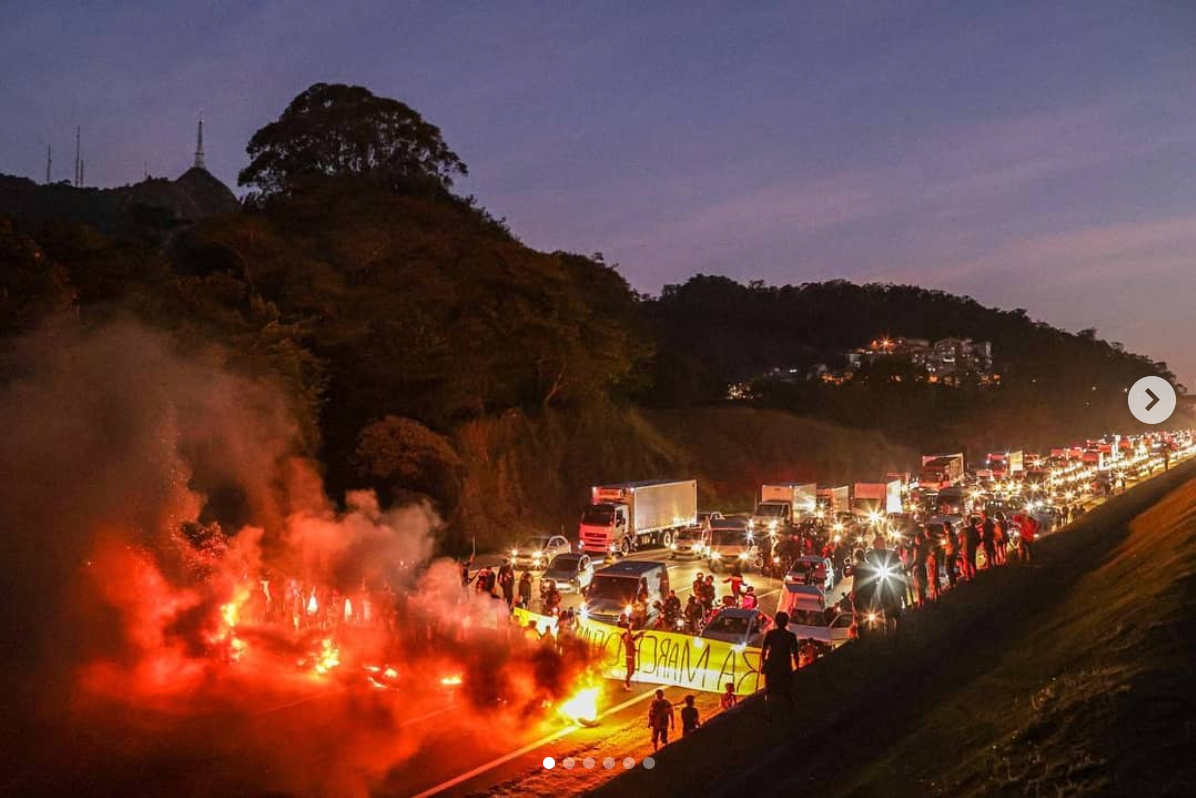
03 de julho de 2021: no contexto da pandemia da COVID, ativistas Guarani participam da grande manifestação contra o governo do presidente Jair Bolsonaro, trazendo a pauta do Marco Temporal para a manifestação

23 de junho de 2022: ocupação do Monumento às Bandeiras em protesto contra a tramitação da lei do Marco Temporal
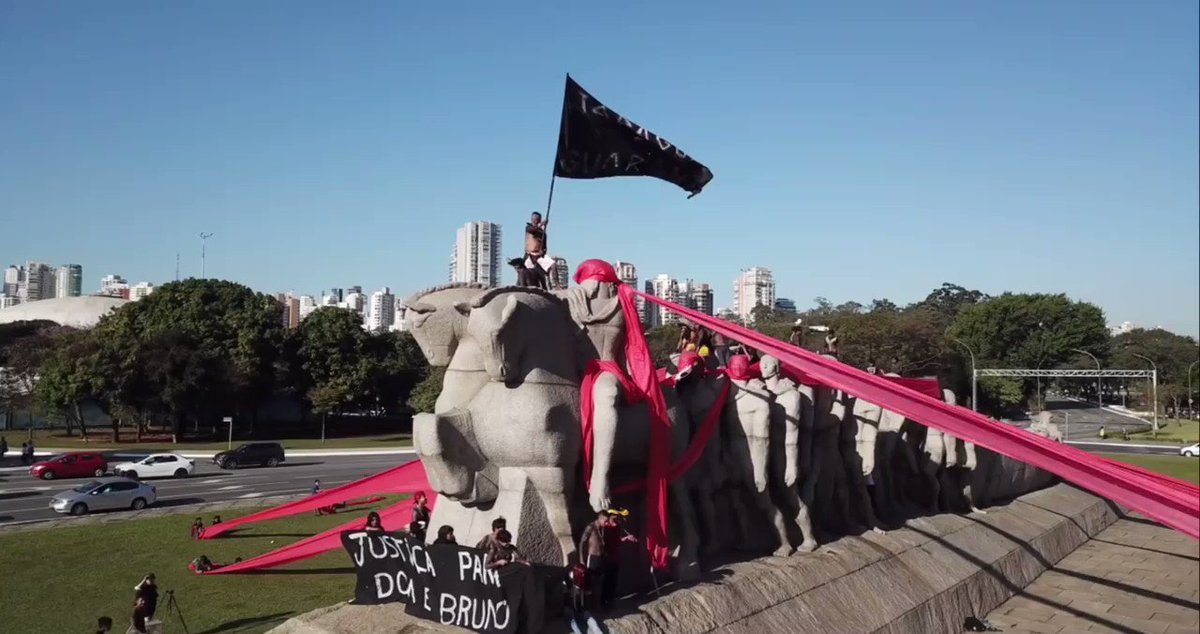
09 de agosto de 2022: ato organizado pela Comissão Yvyrupa na Faculdade de Direito da USP, no Largo São Francisco, contra o Marco Temporal

Maio-Junho de 2023: em protesto contra a aprovação da PL490/2007 pelos deputados em Brasília, ativistas Guarani novamente bloqueiam a Rodovia dos Bandeirantes. A manifestação é duramente reprimida pela Polícia Militar. Dias depois, em 04 de junho, a comunidade Guarani realiza a “Caminhada pela Vida” na área da T.I. Jaraguá

07 de junho de 2023: desafiando a repressão estatal, no dia 07 de junho ativistas Guarani realizam novo ato contra o Marco Temporal, desta vez na escadaria do Teatro Municipal no centro de São Paulo

PATRIMONIALIZAÇÃO DO JARAGUÁ
Em 1978, no contexto da construção do complexo turístico do Parque Estadual do Jaraguá, o conjunto Casa Grande-Senzala da propriedade do bandeirante Afonso Sardinha é tombado pelo CONDEPHAAT
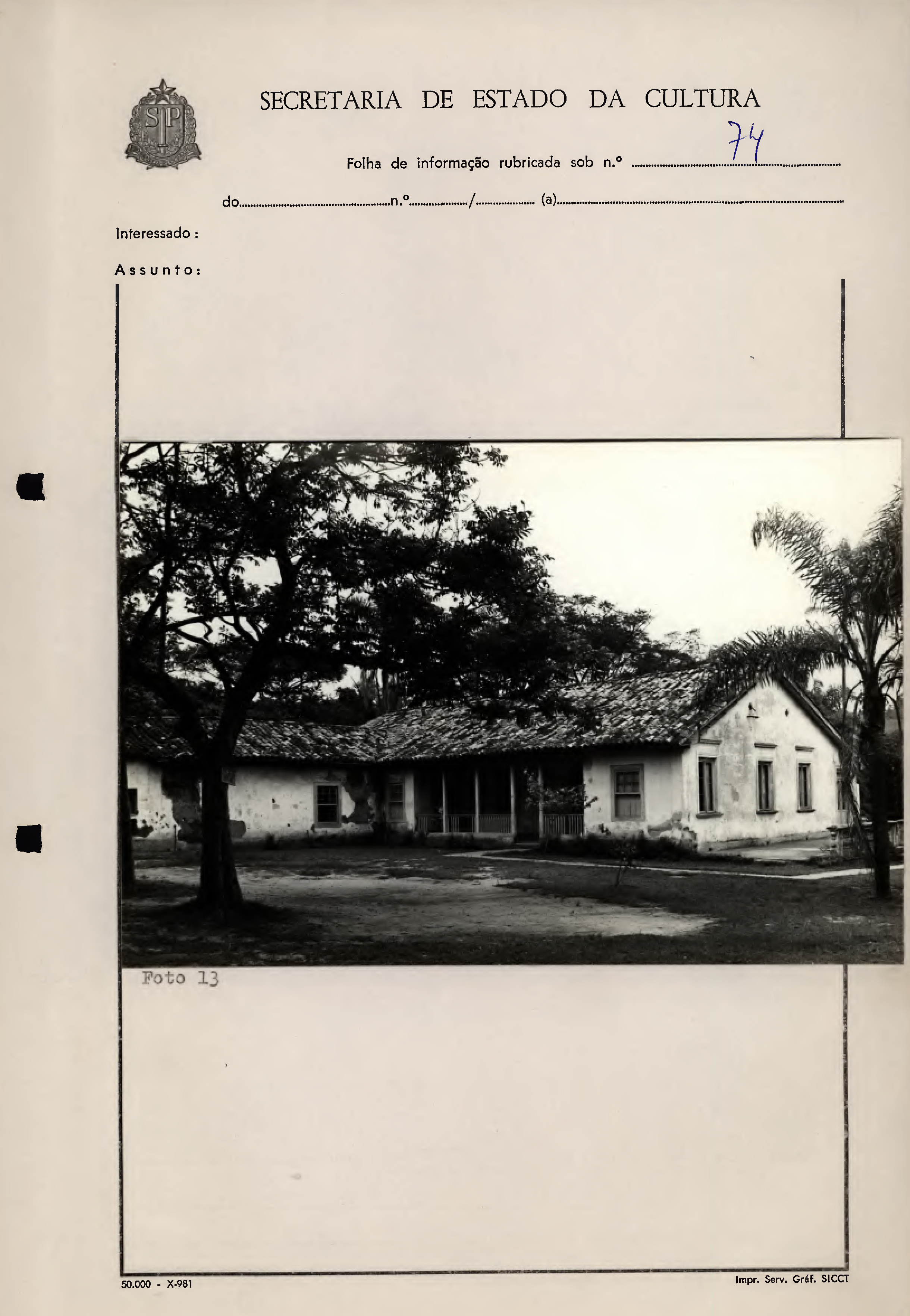
Em 1983, toda a área do Parque é tombada pelo CONDEPHAAT, e em 1992 pelo CONPRESP.
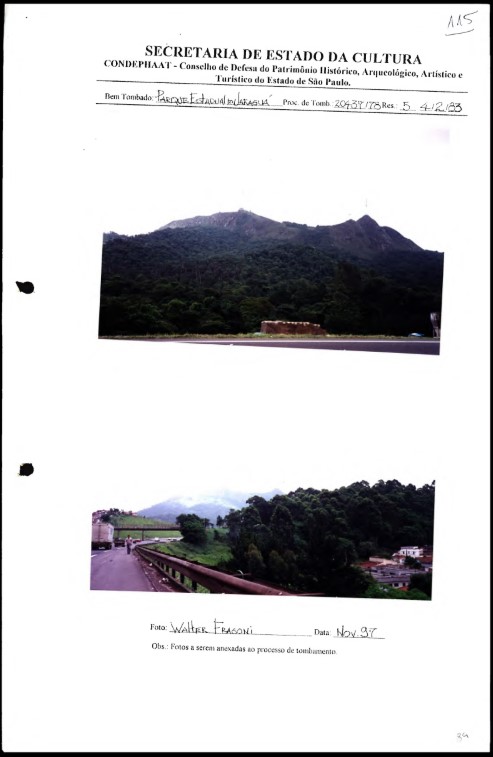
Em 2019 o CONPRESP tomba as estruturas remanescentes da Pedreira de Quartzito no Jaraguá, nas proximidades da Tekoa Itakupé.
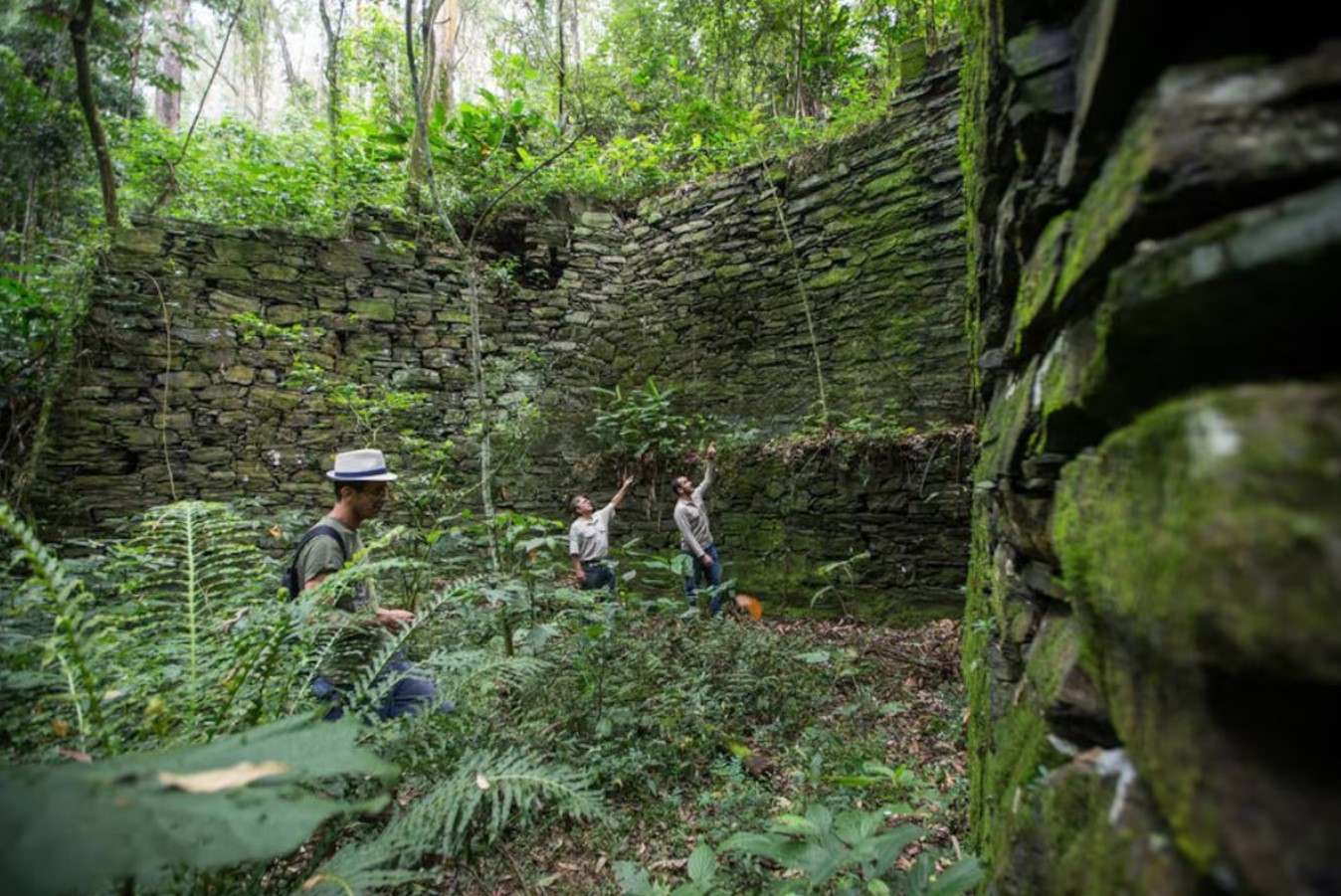
Em 2019 o projeto “Memória Paulistana”, do Departamento de Patrimônio Histórico da Prefeitura de São Paulo, reconhece dois lugares de memória Guarani.
O lugar onde viveu a matriarca cacica Jandira, fundadora da Tekoa Ytu, a primeira retomada do Jaraguá; e o lugar onde foram realizados os protestos na Rodovia dos Bandeirantes.

